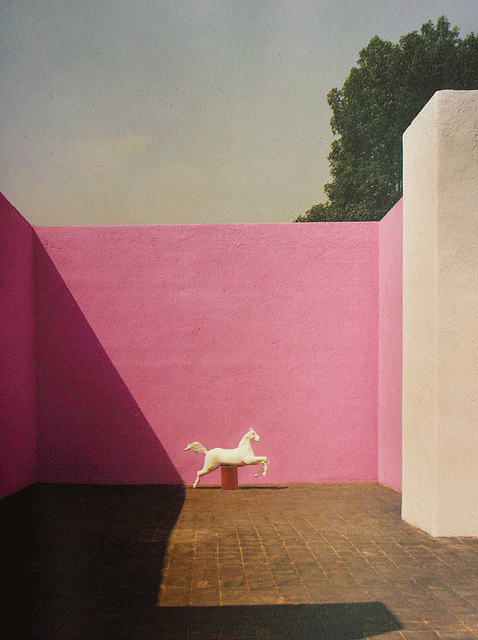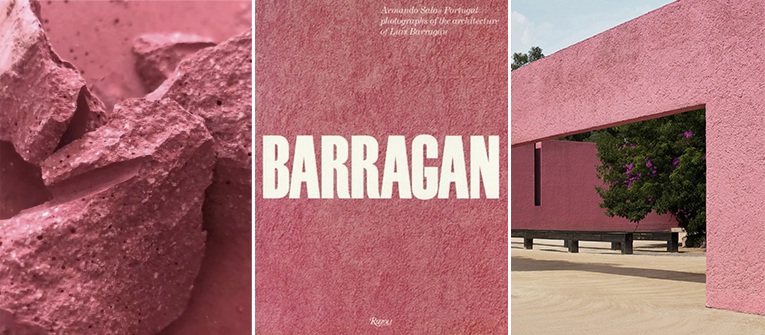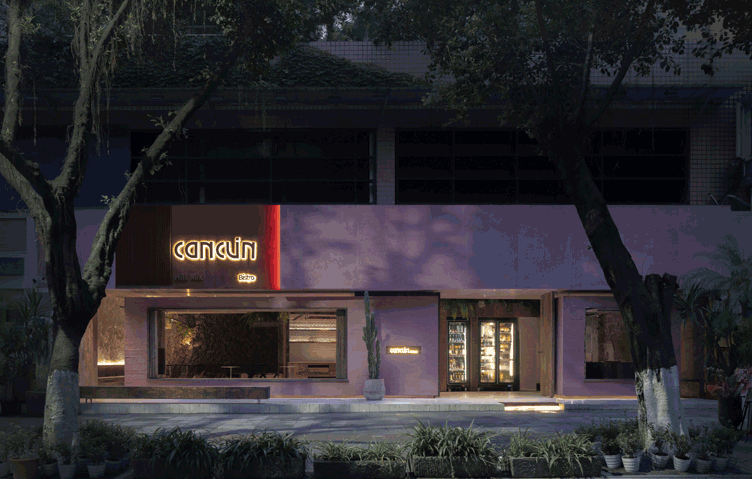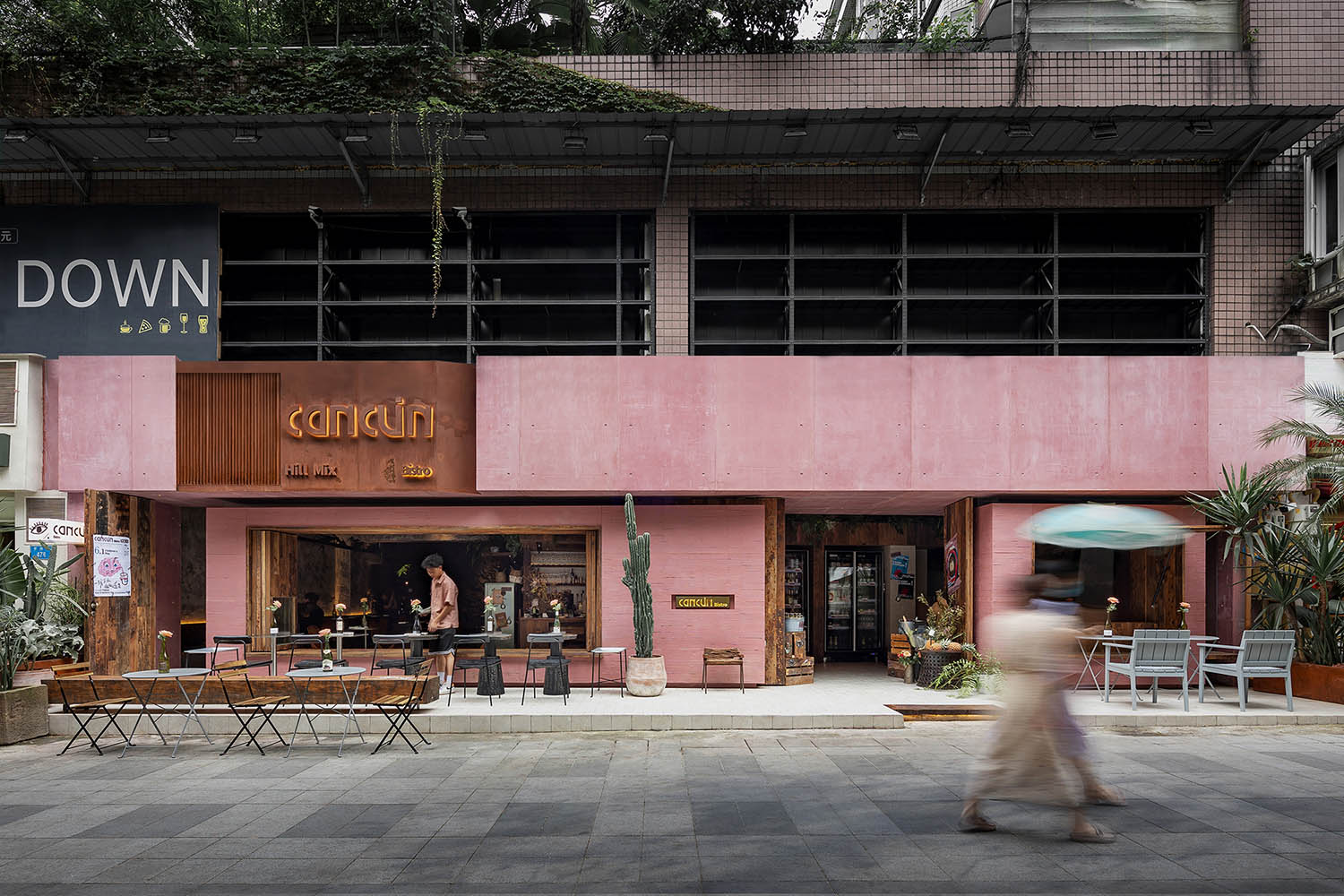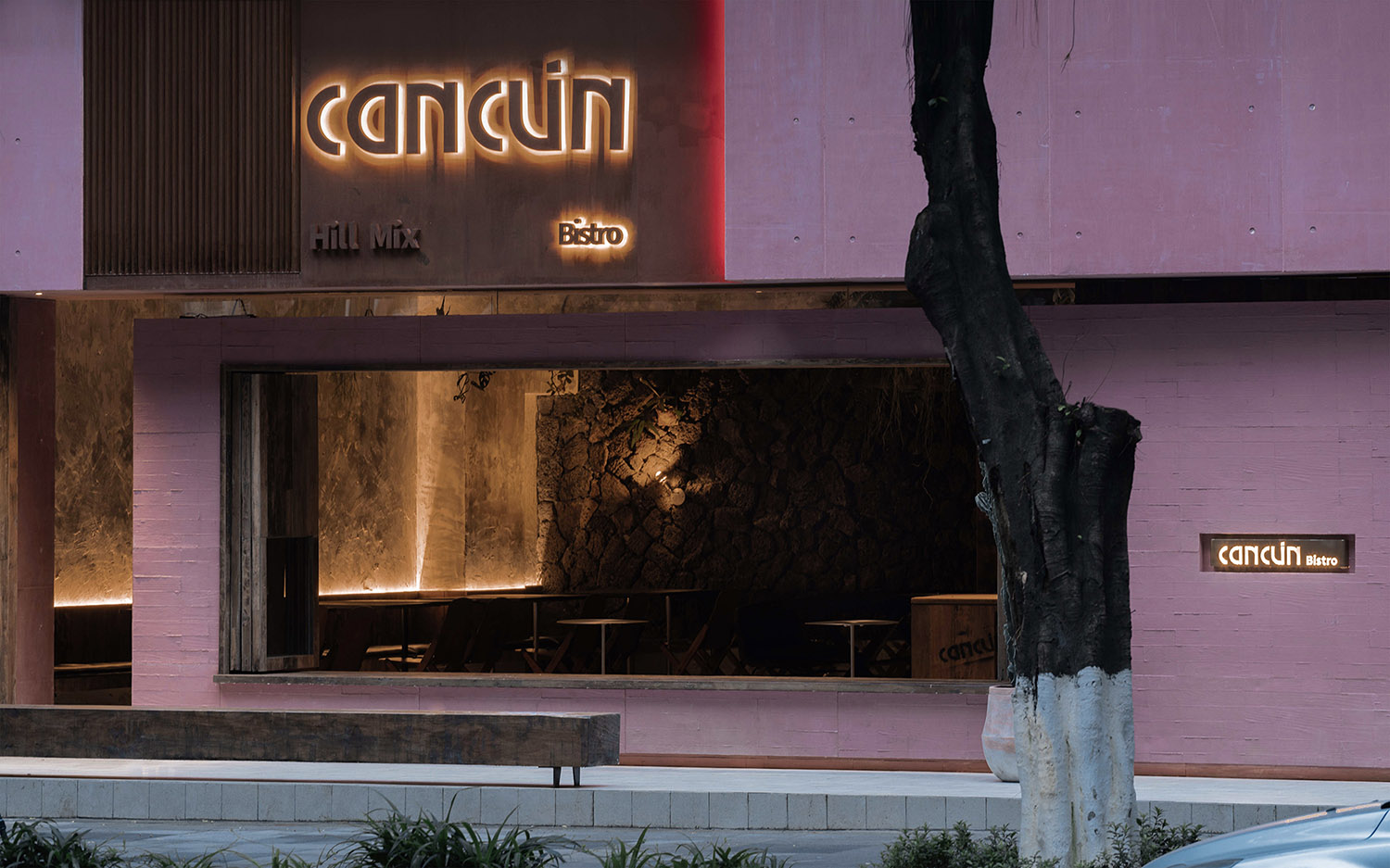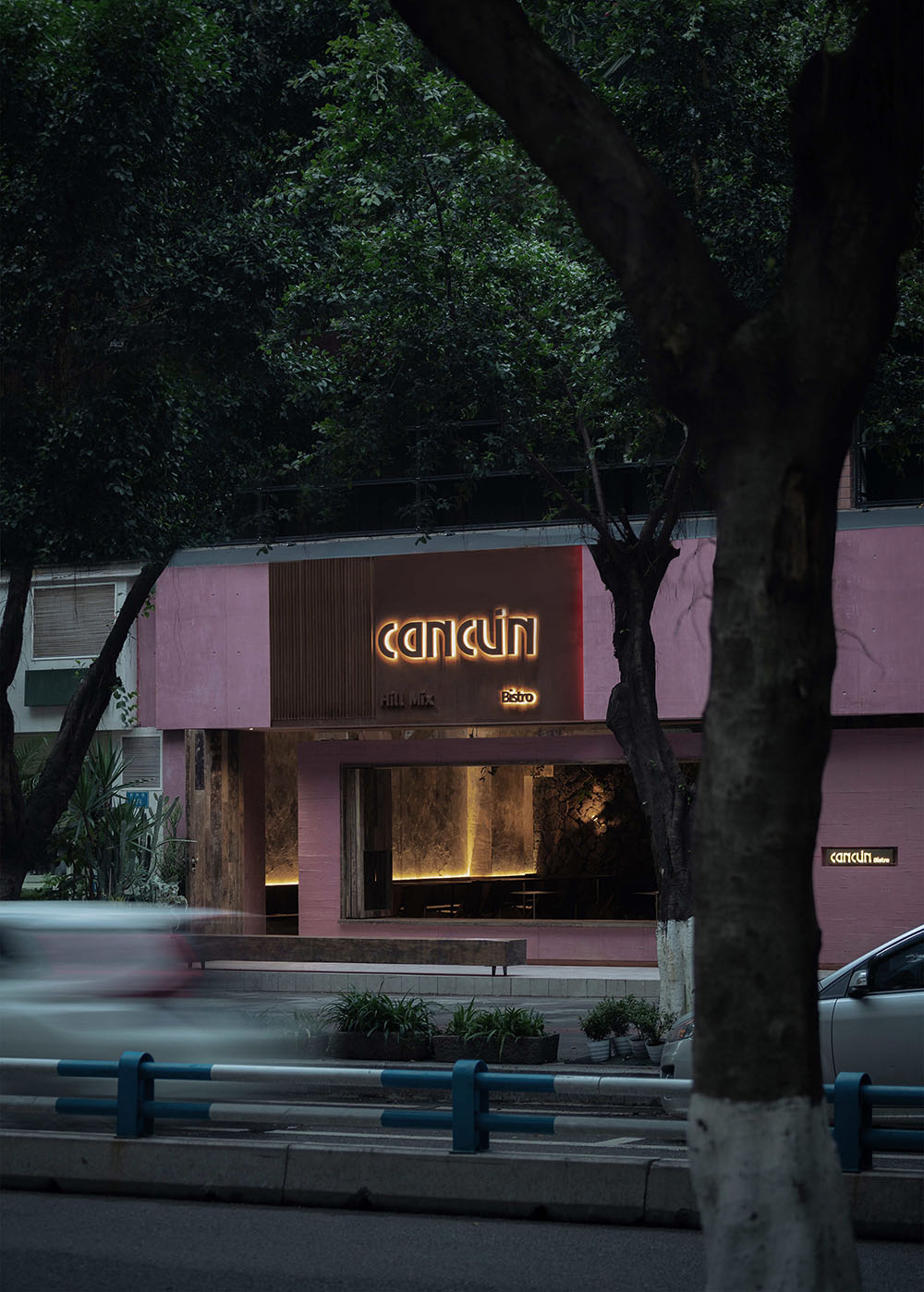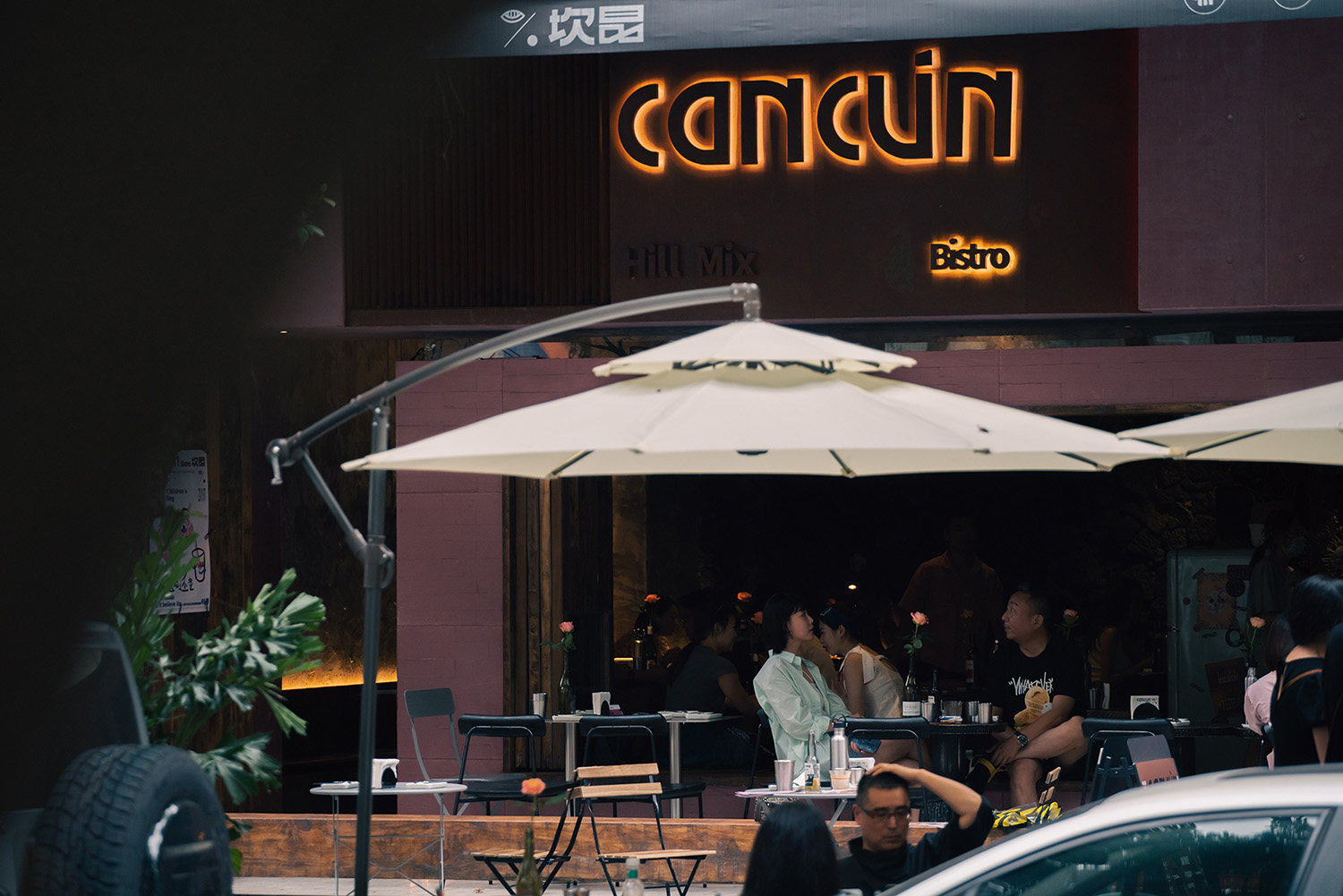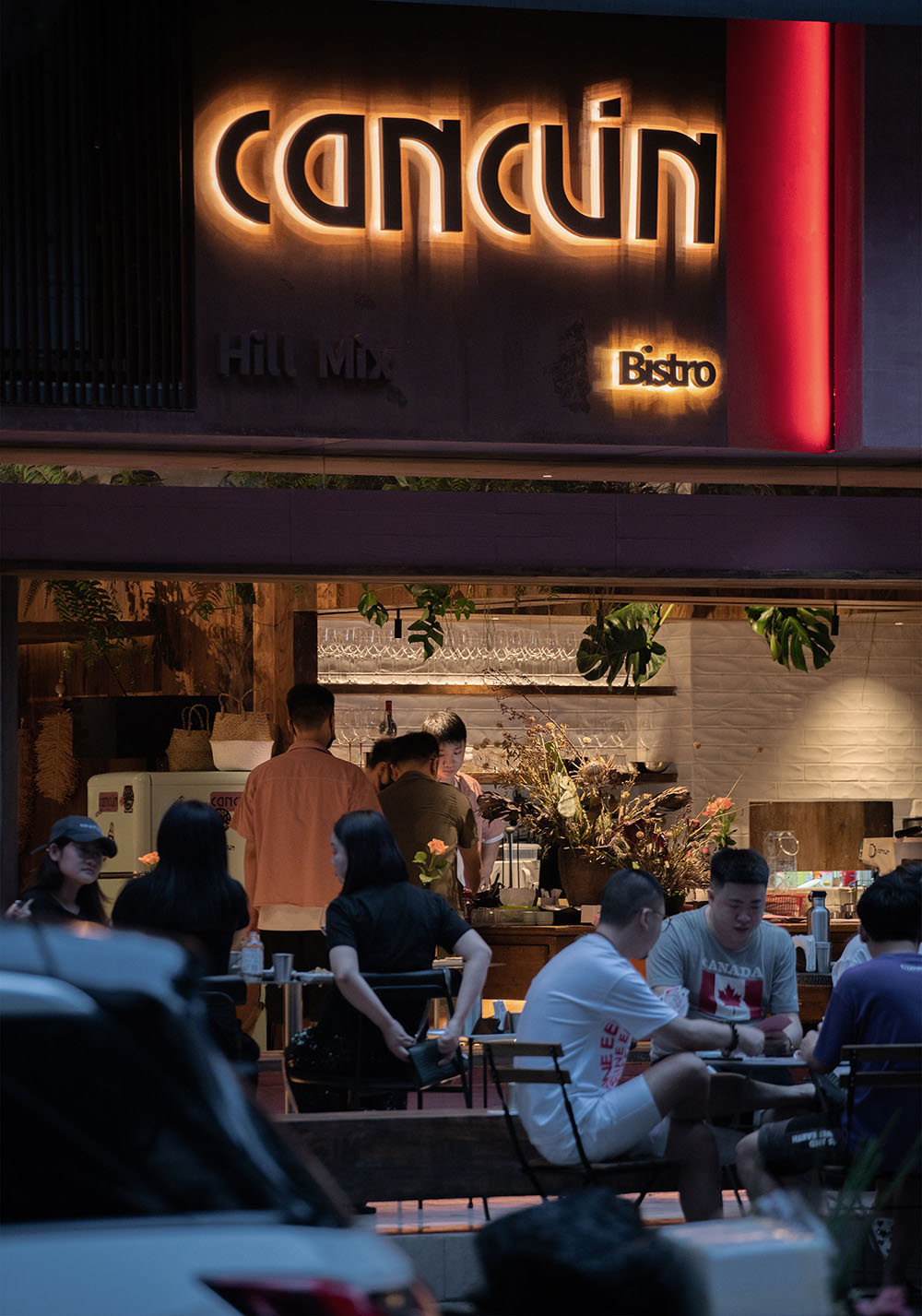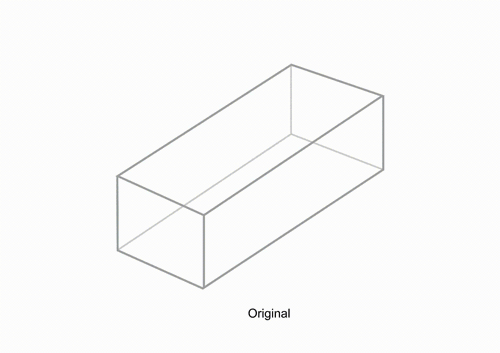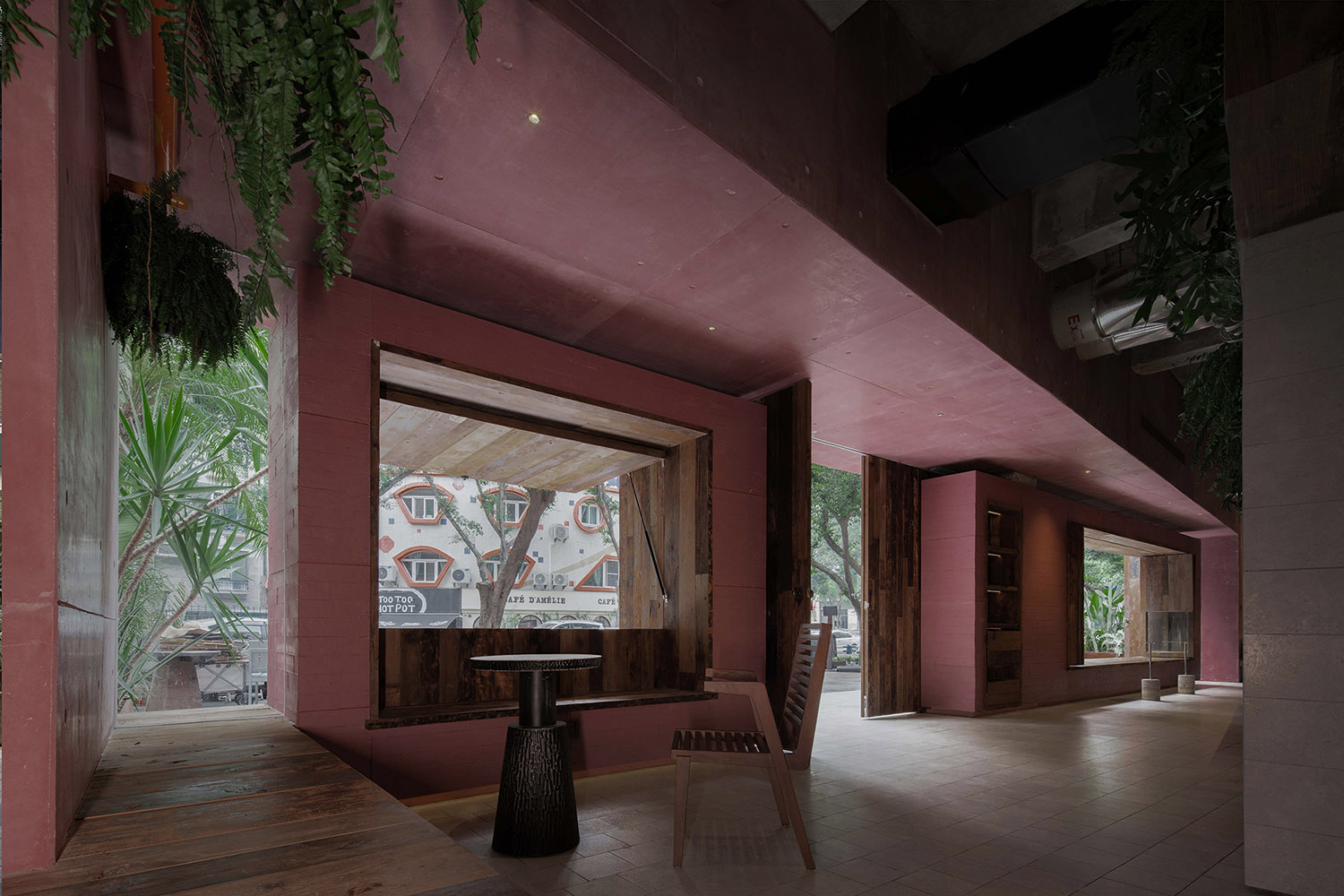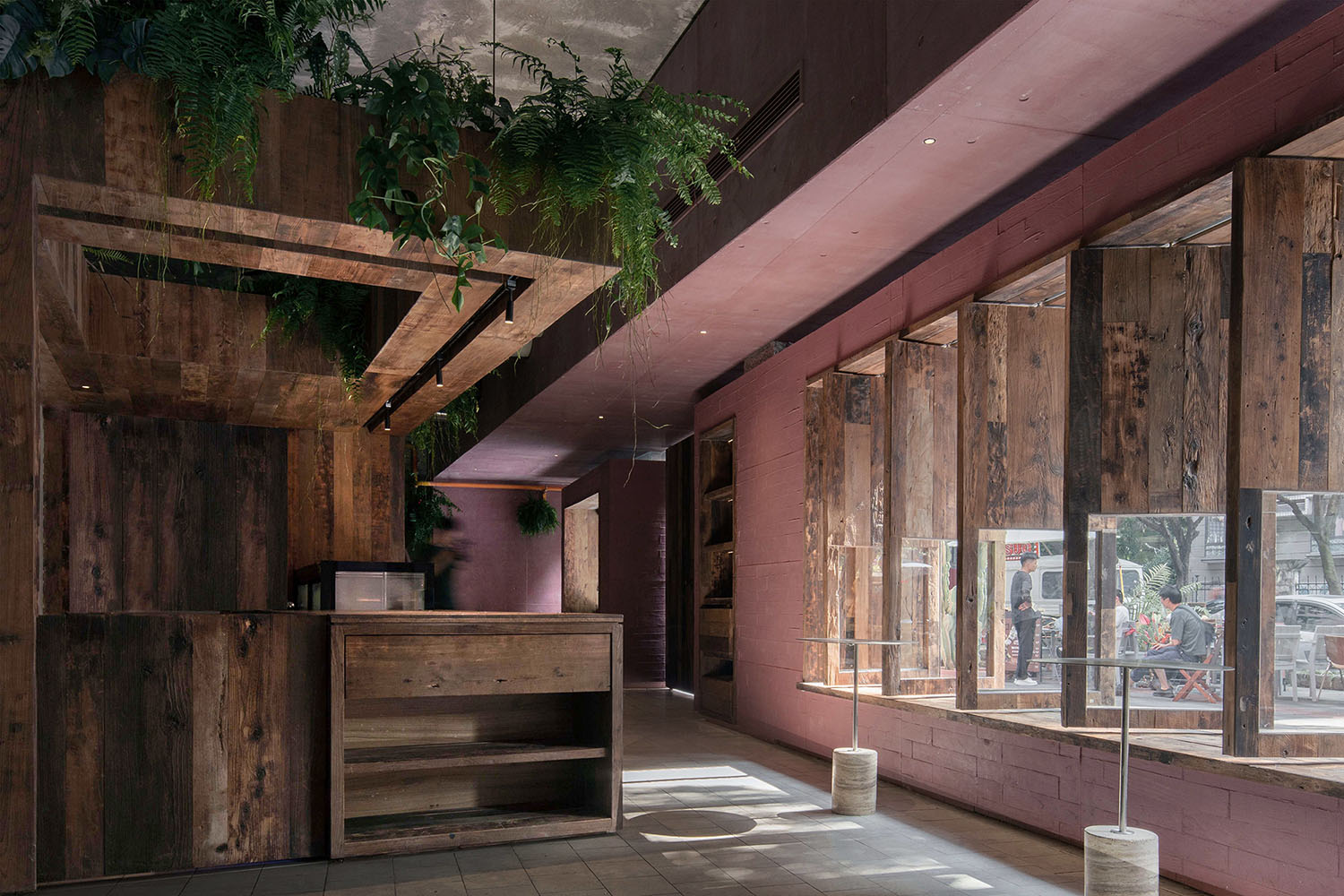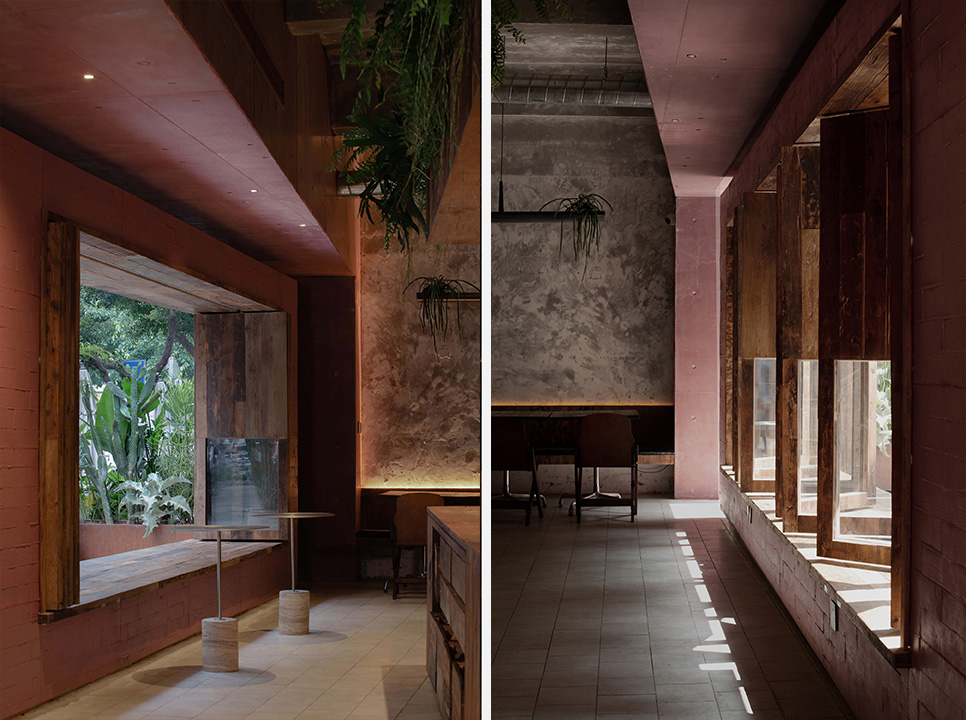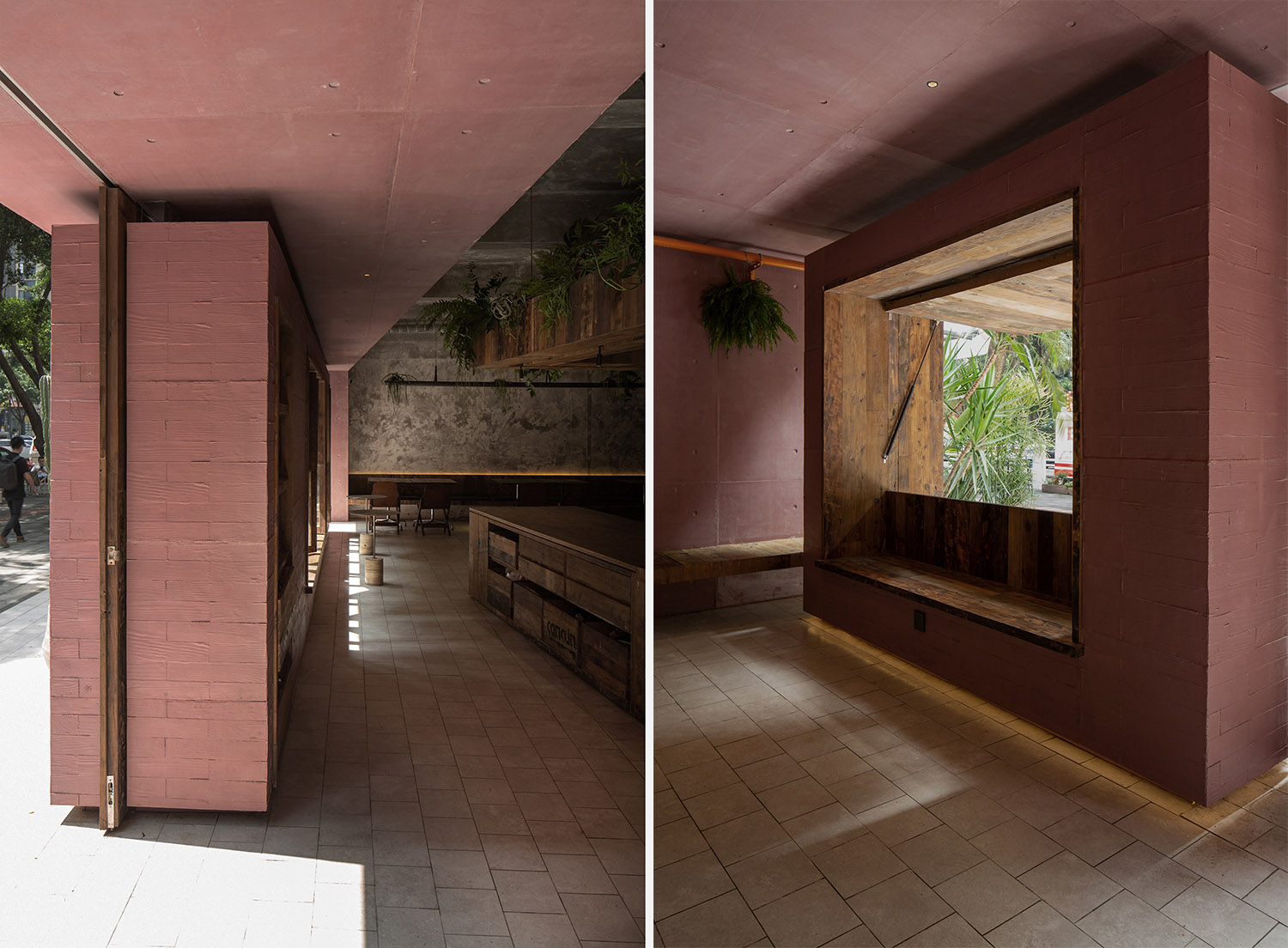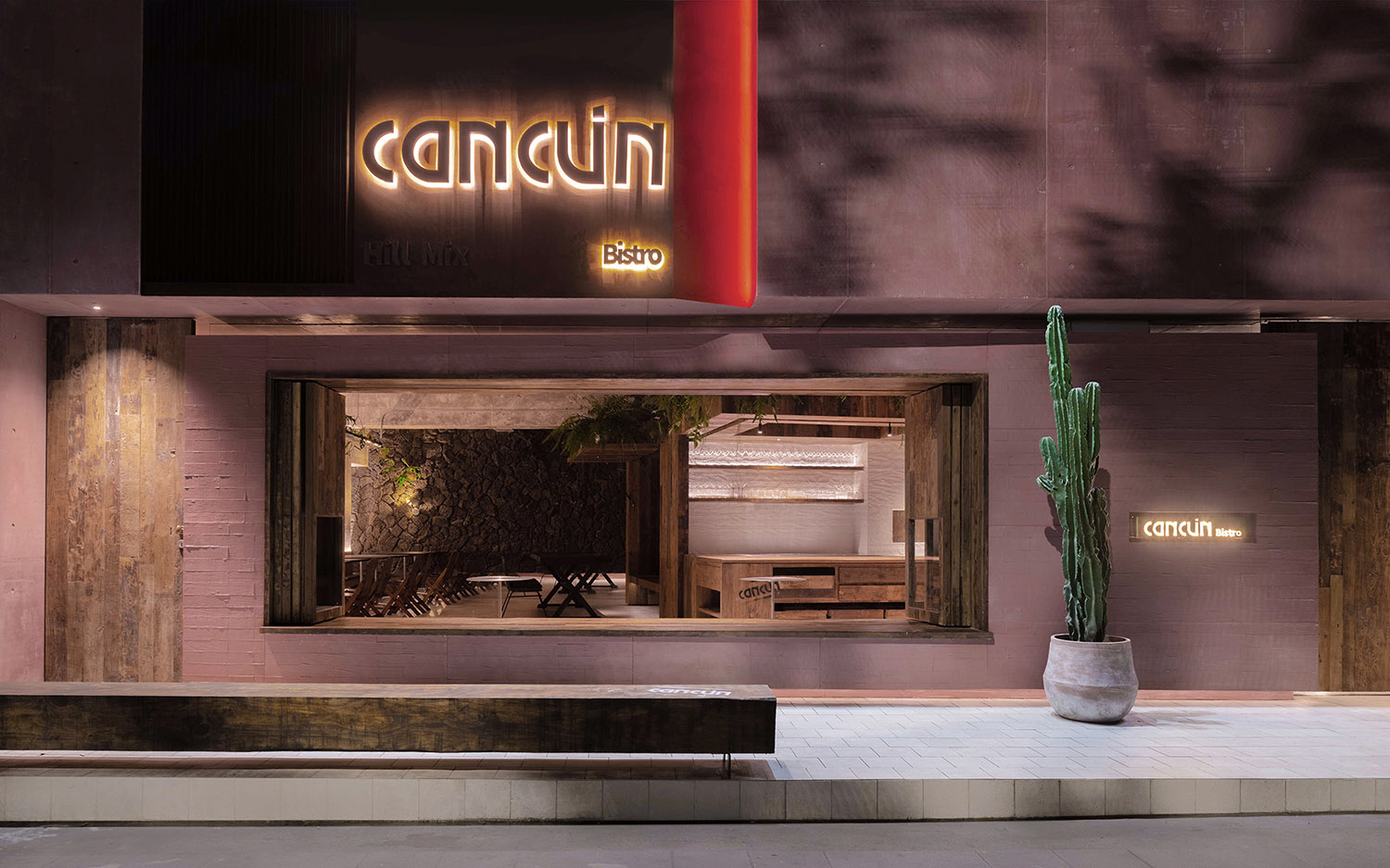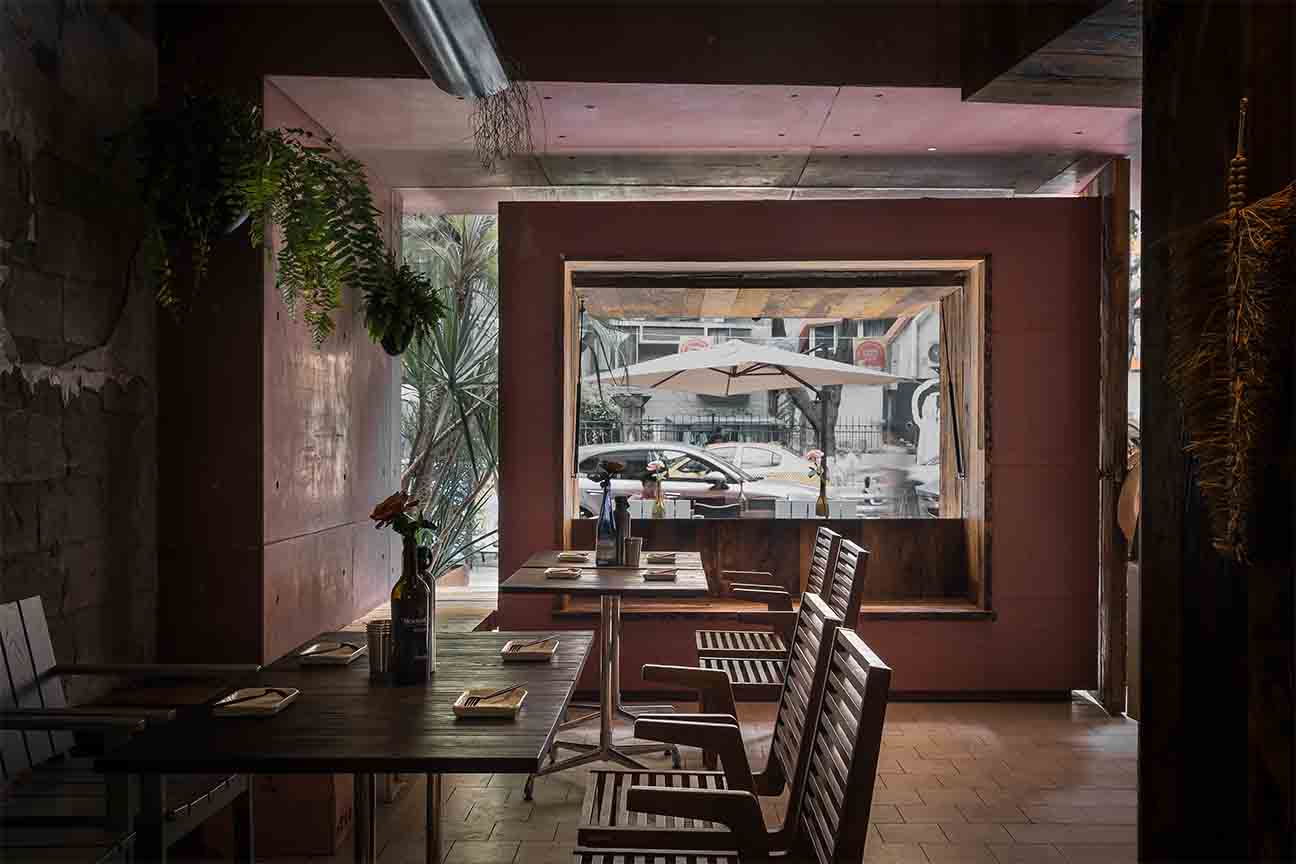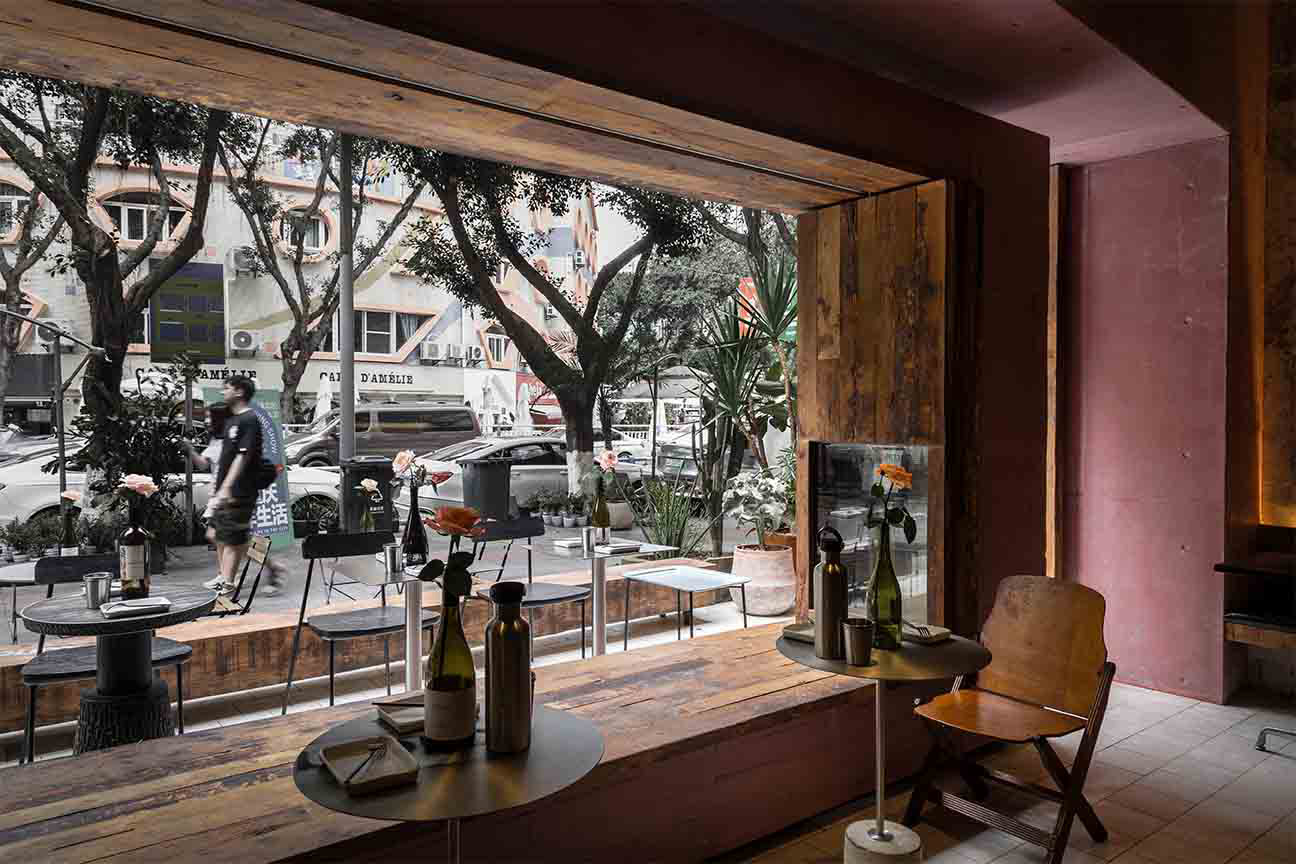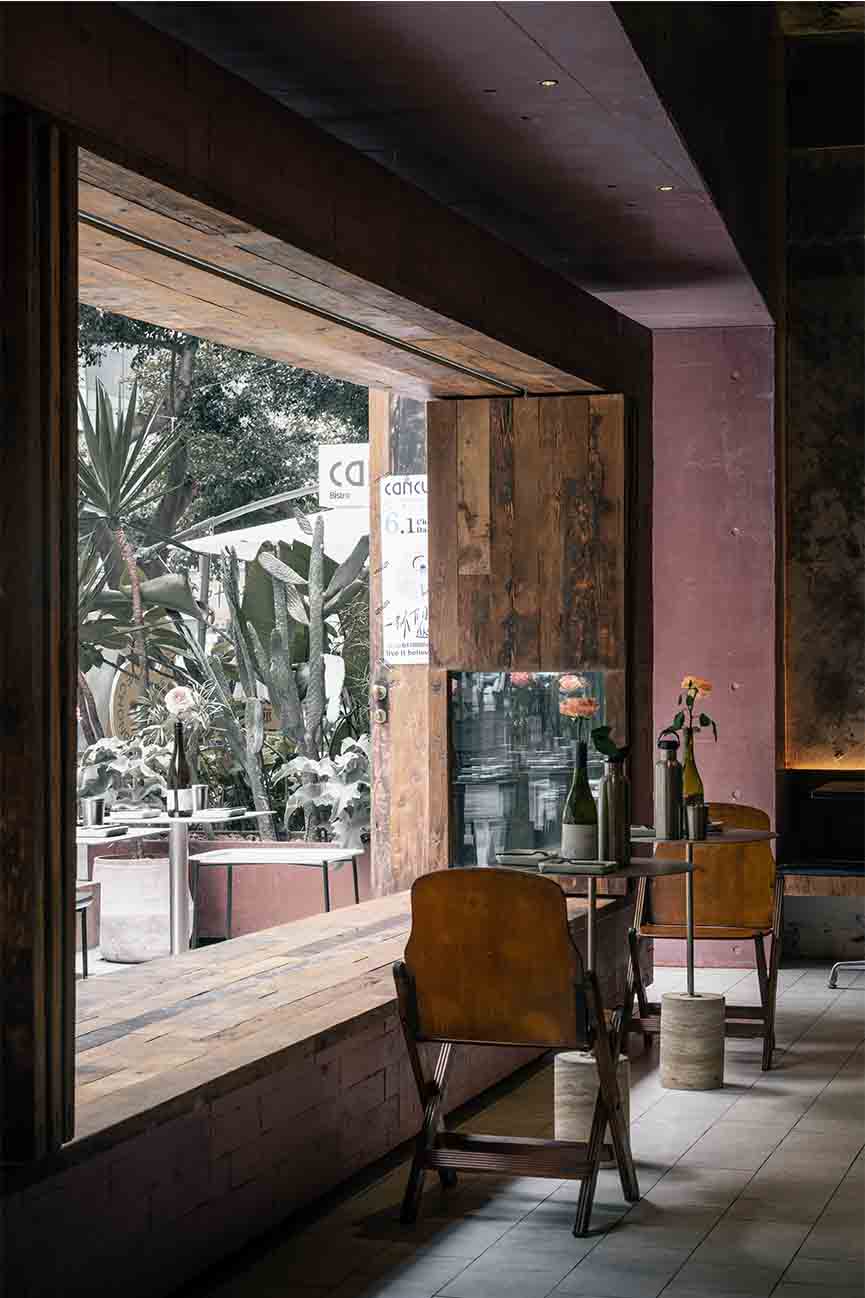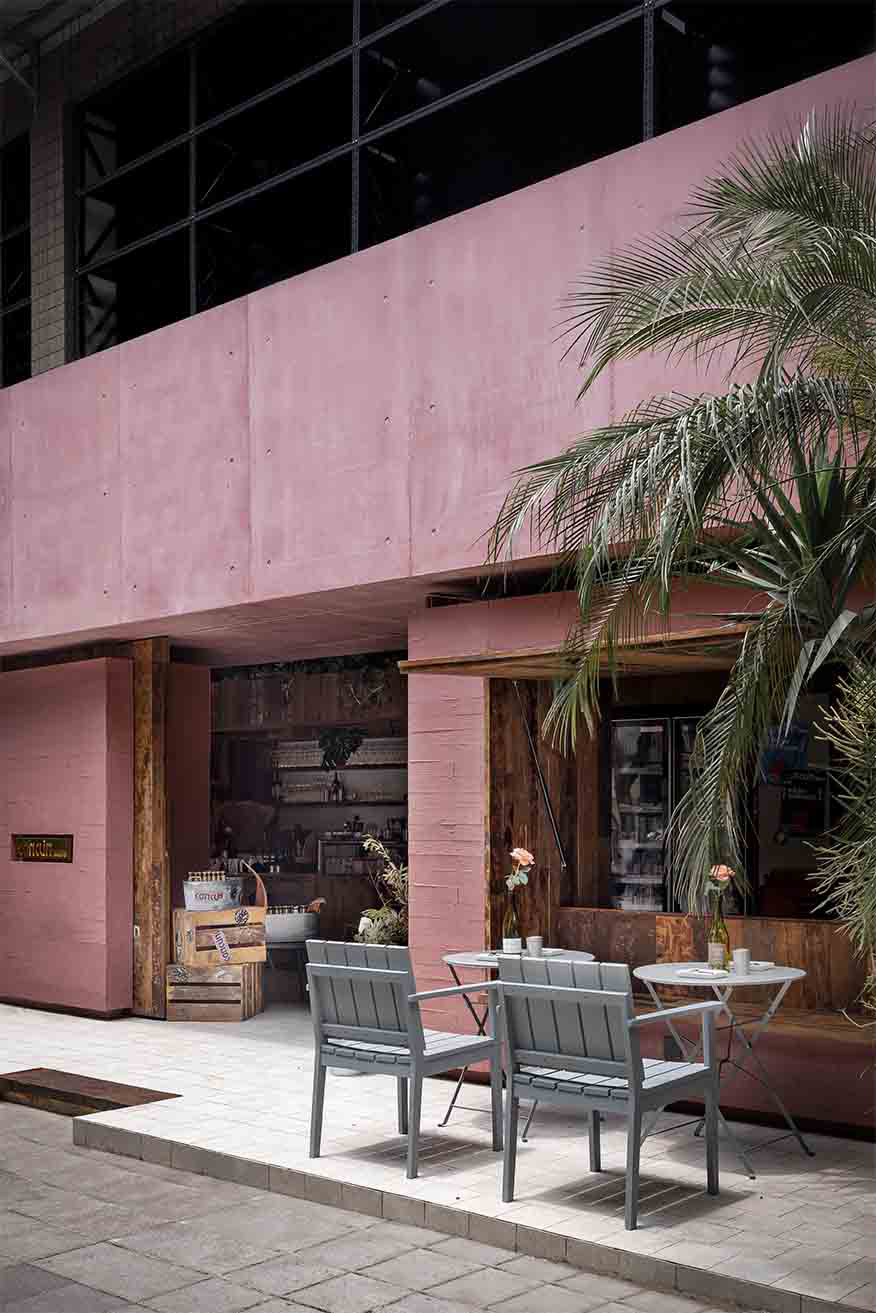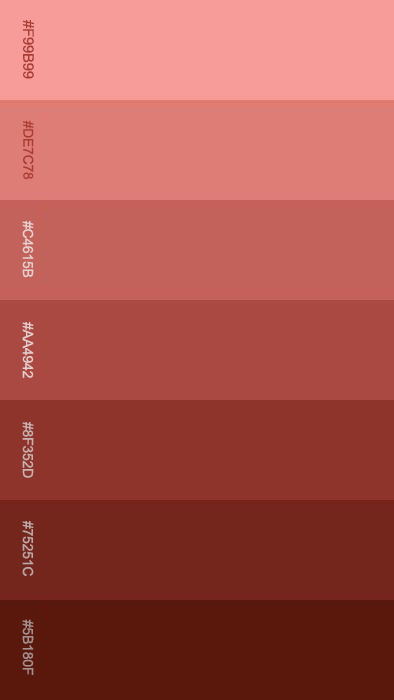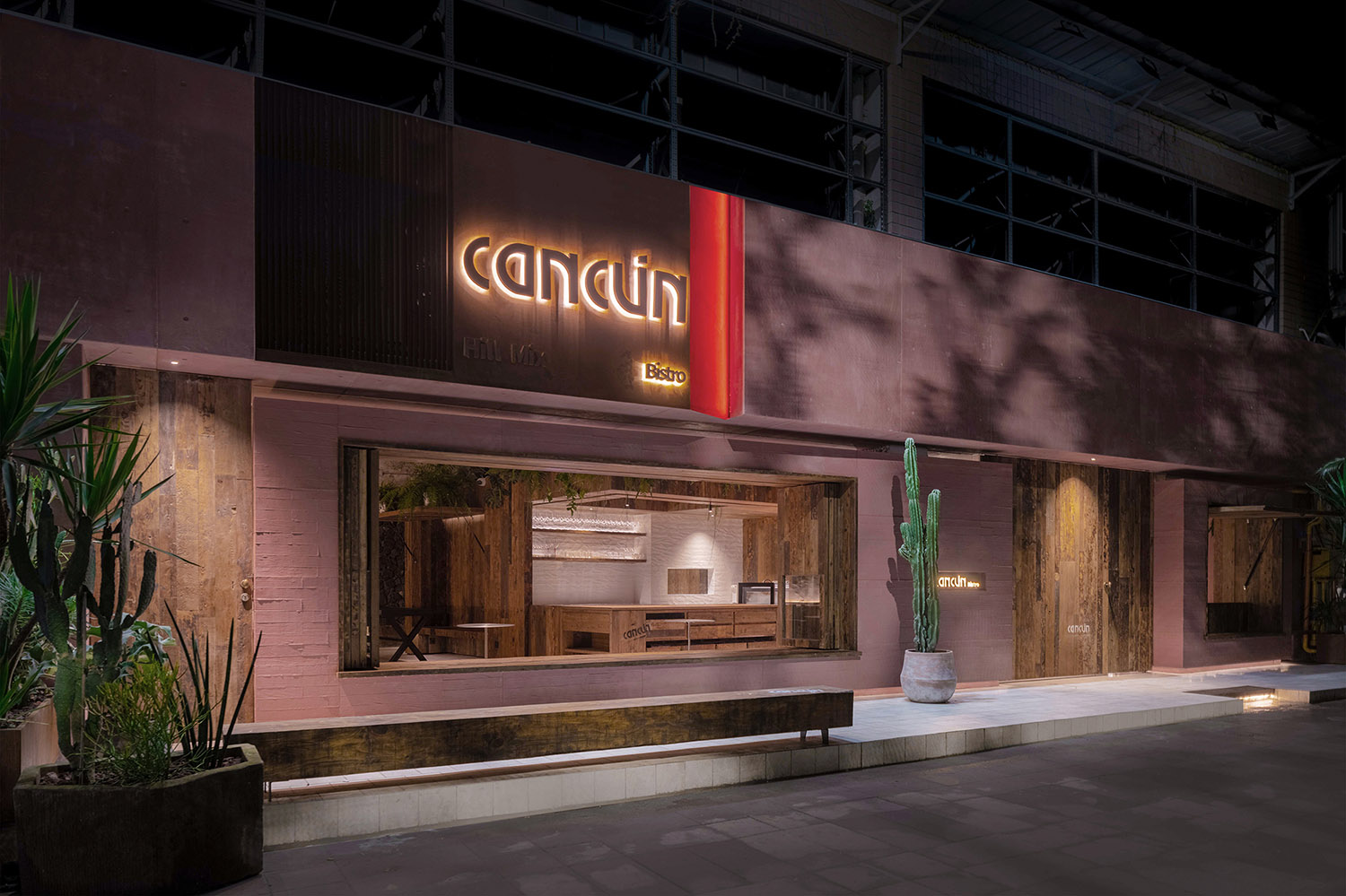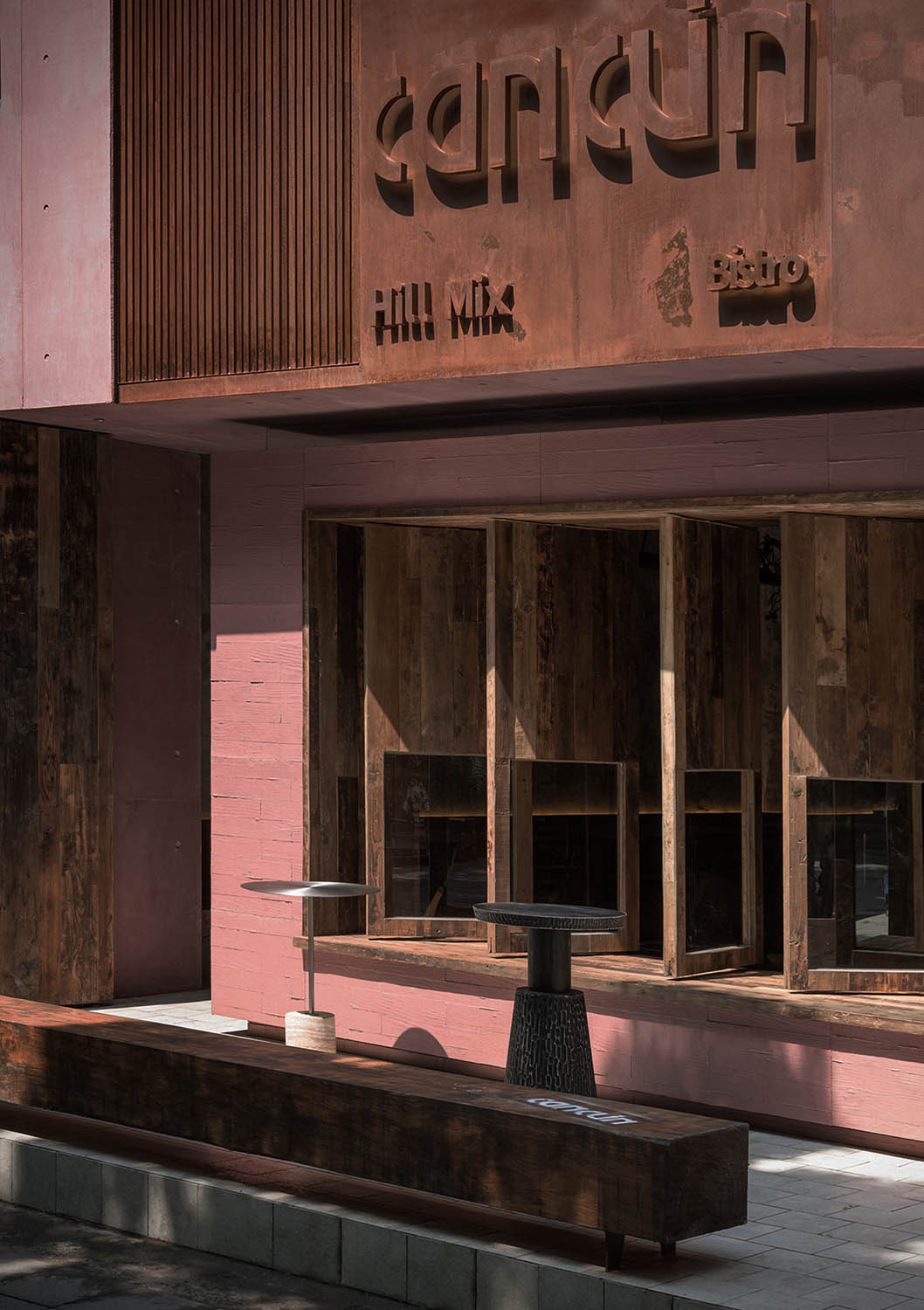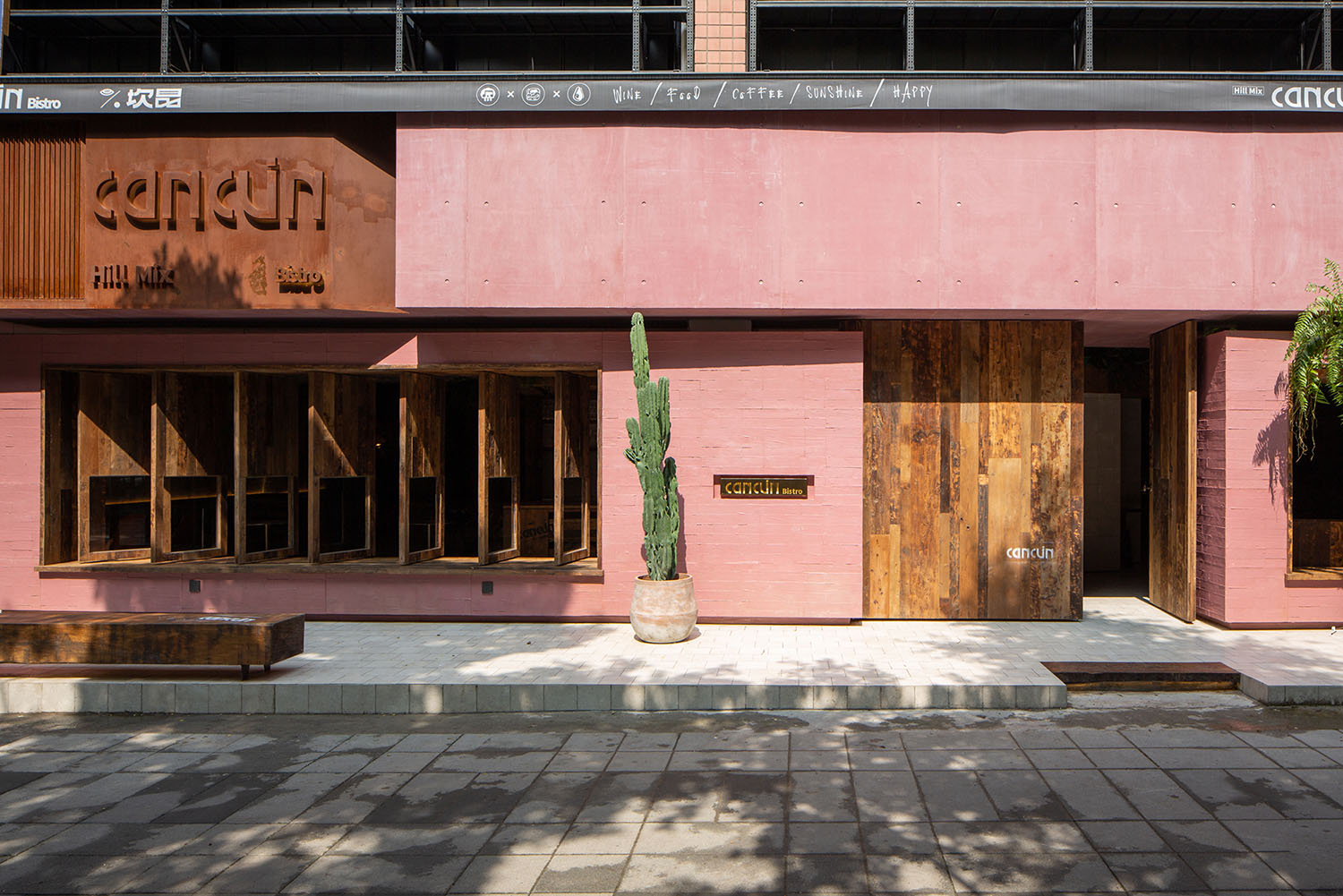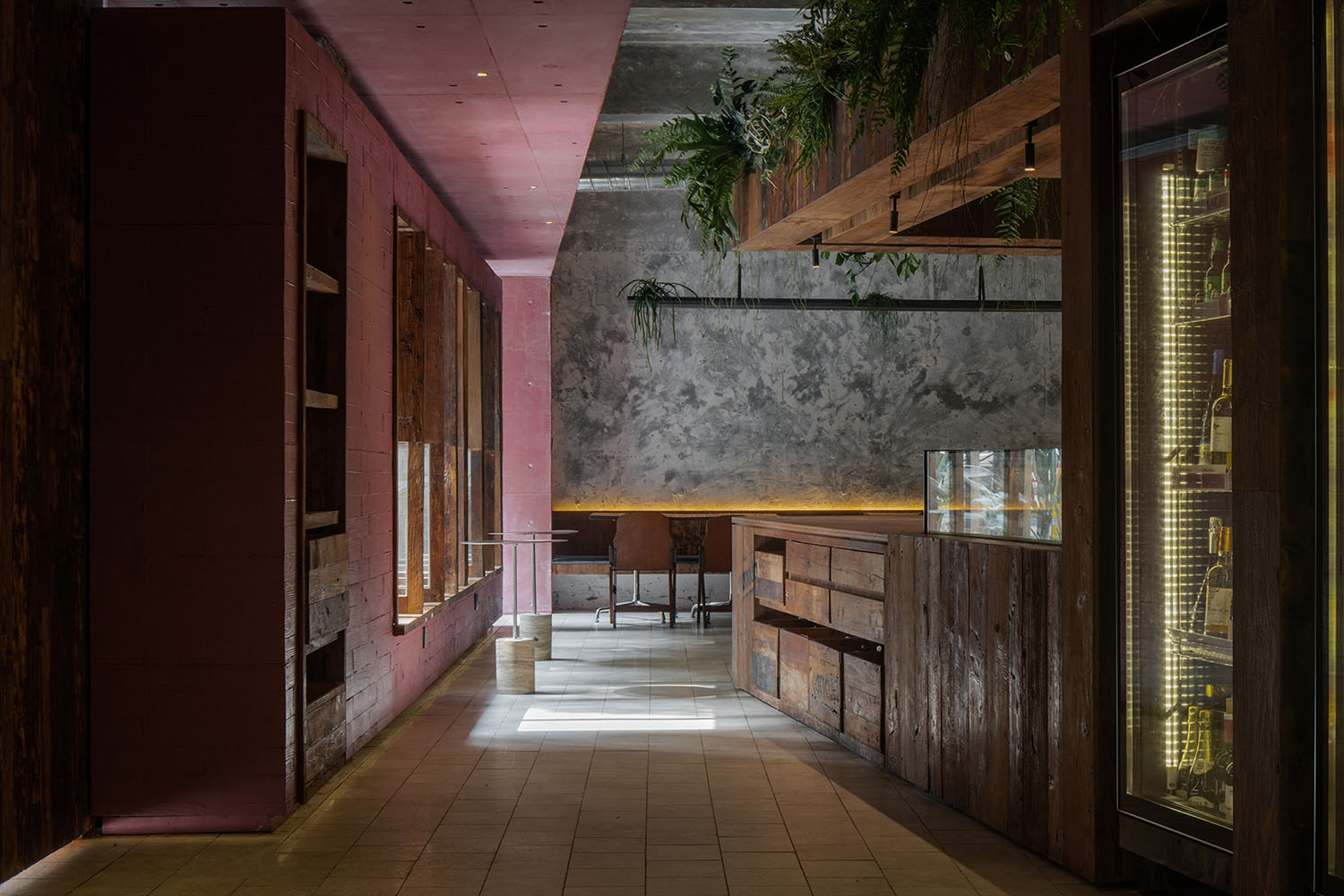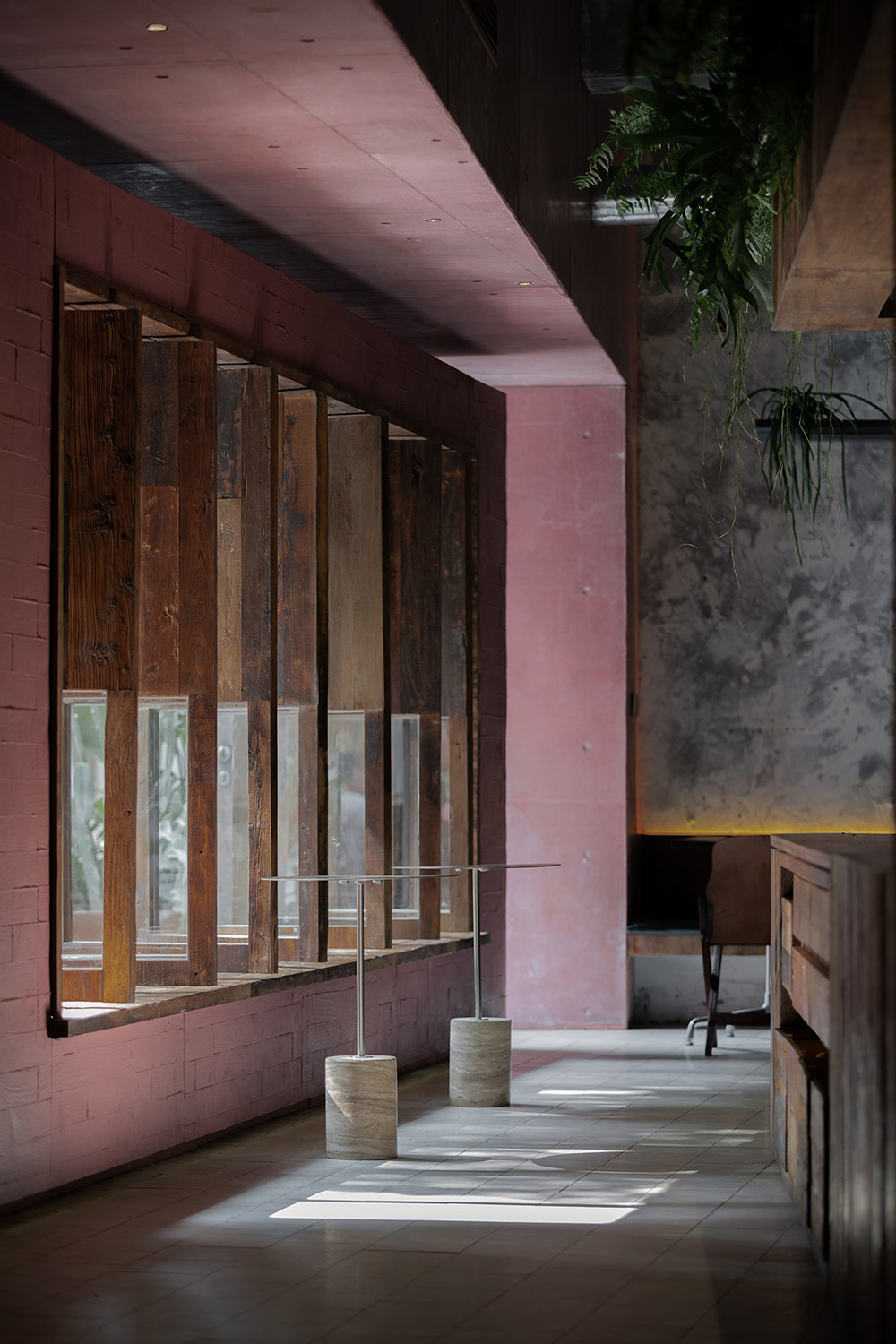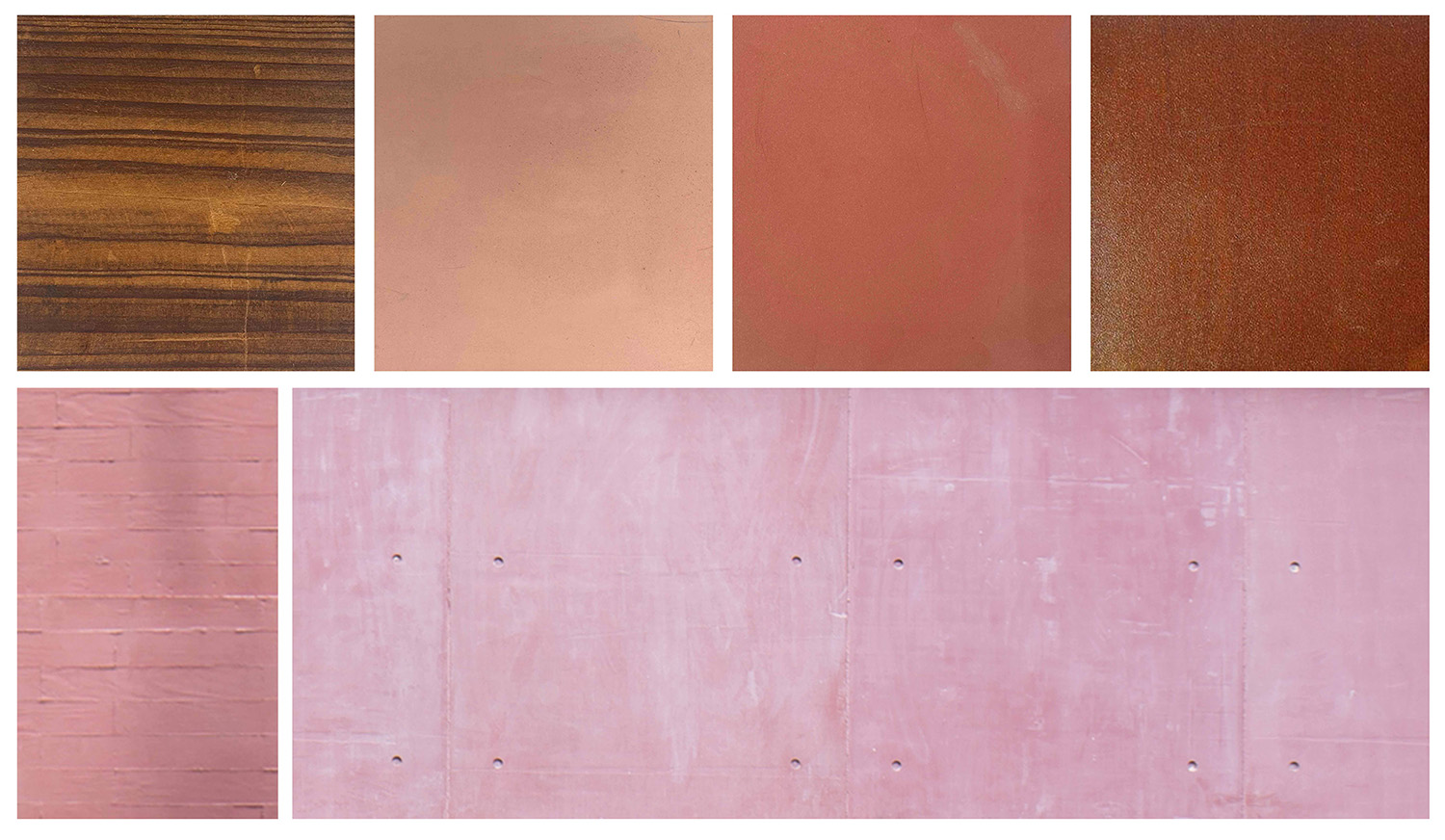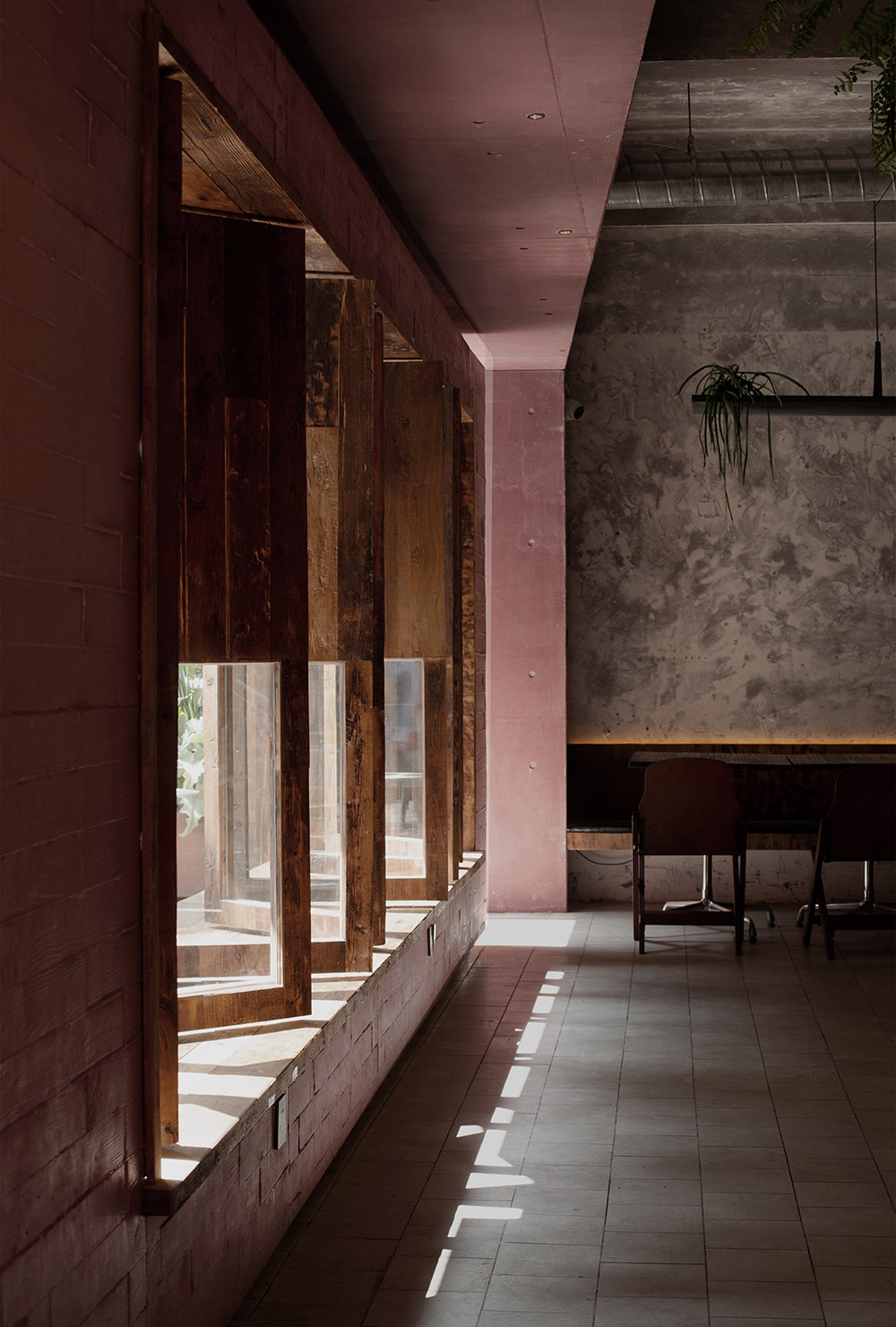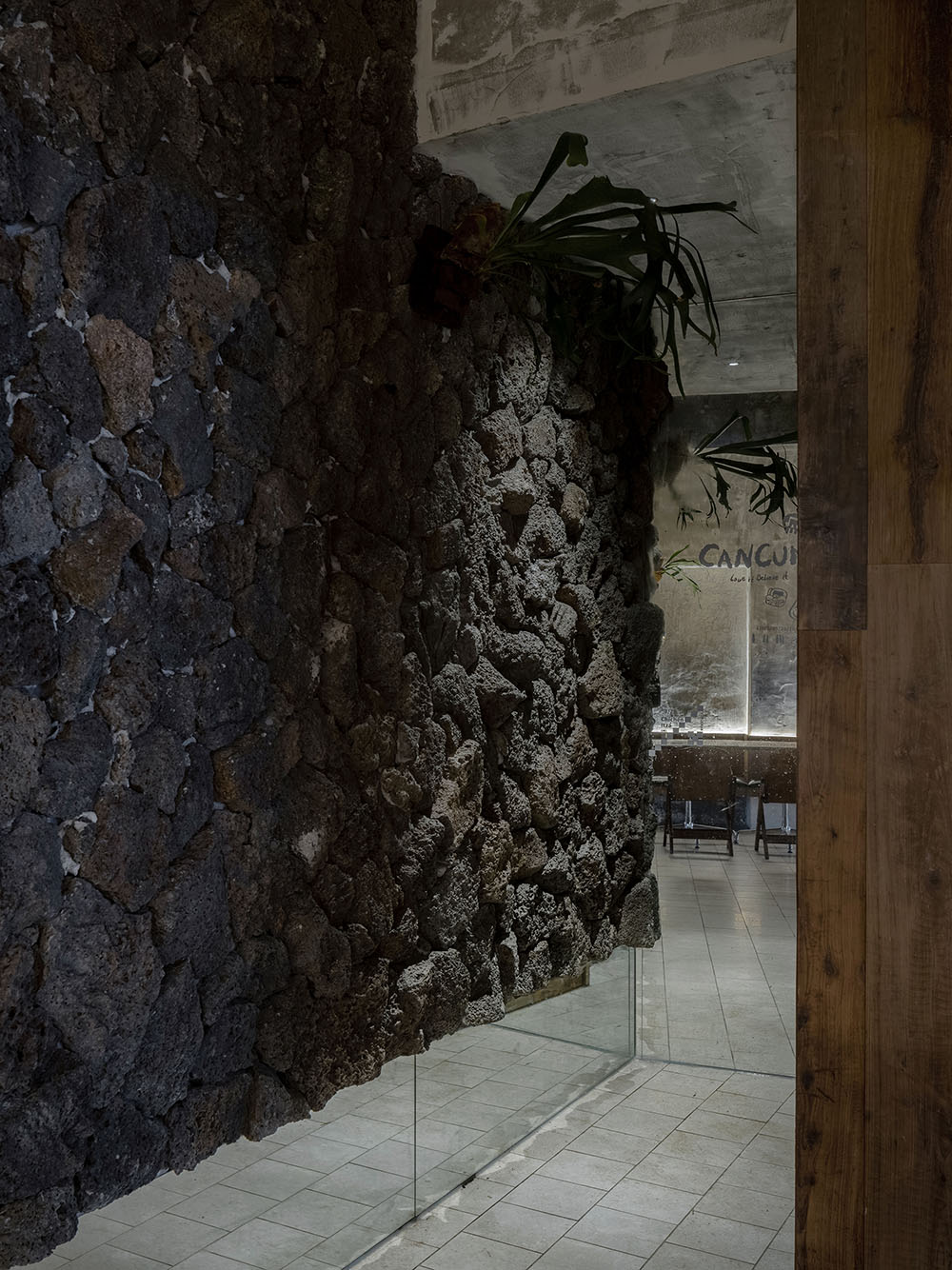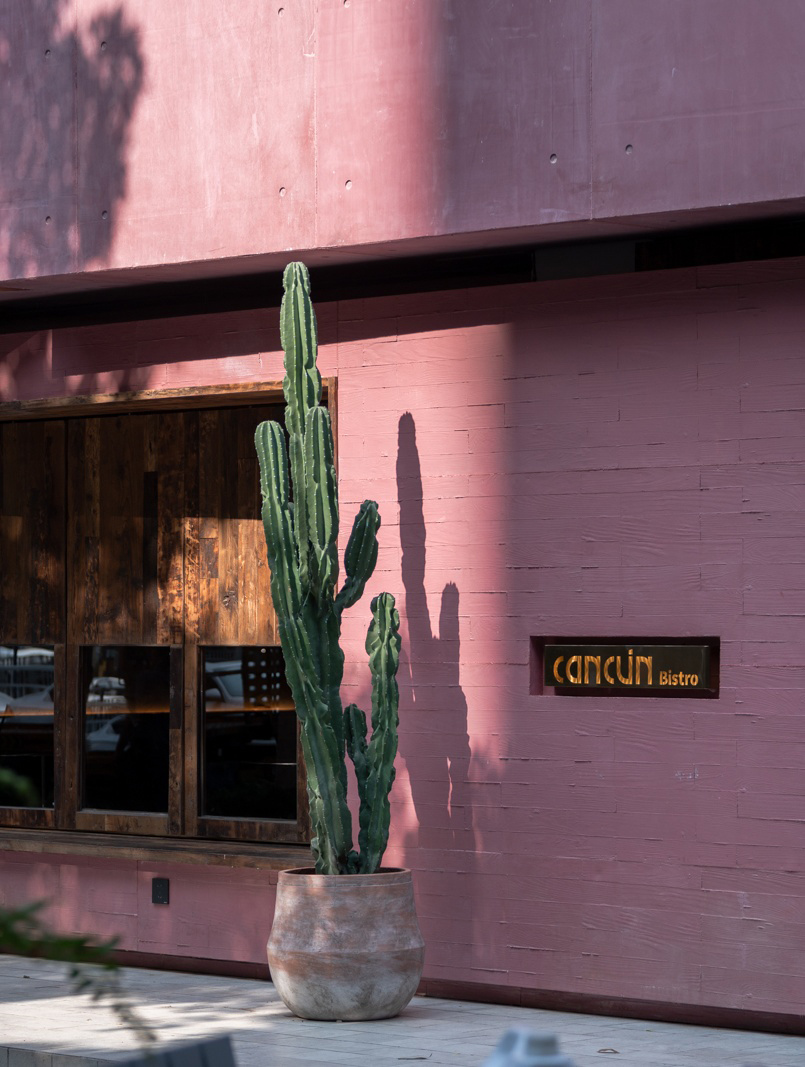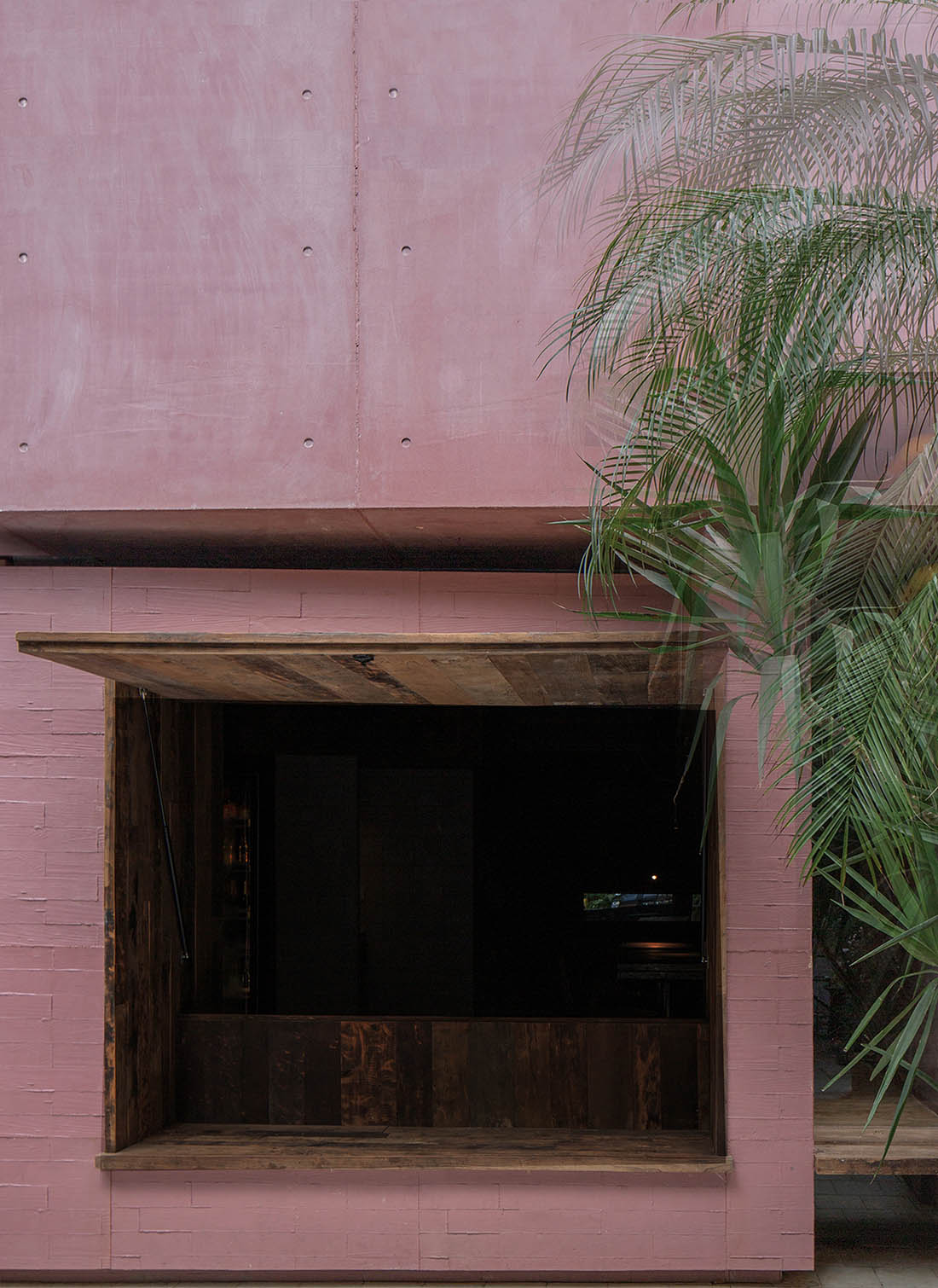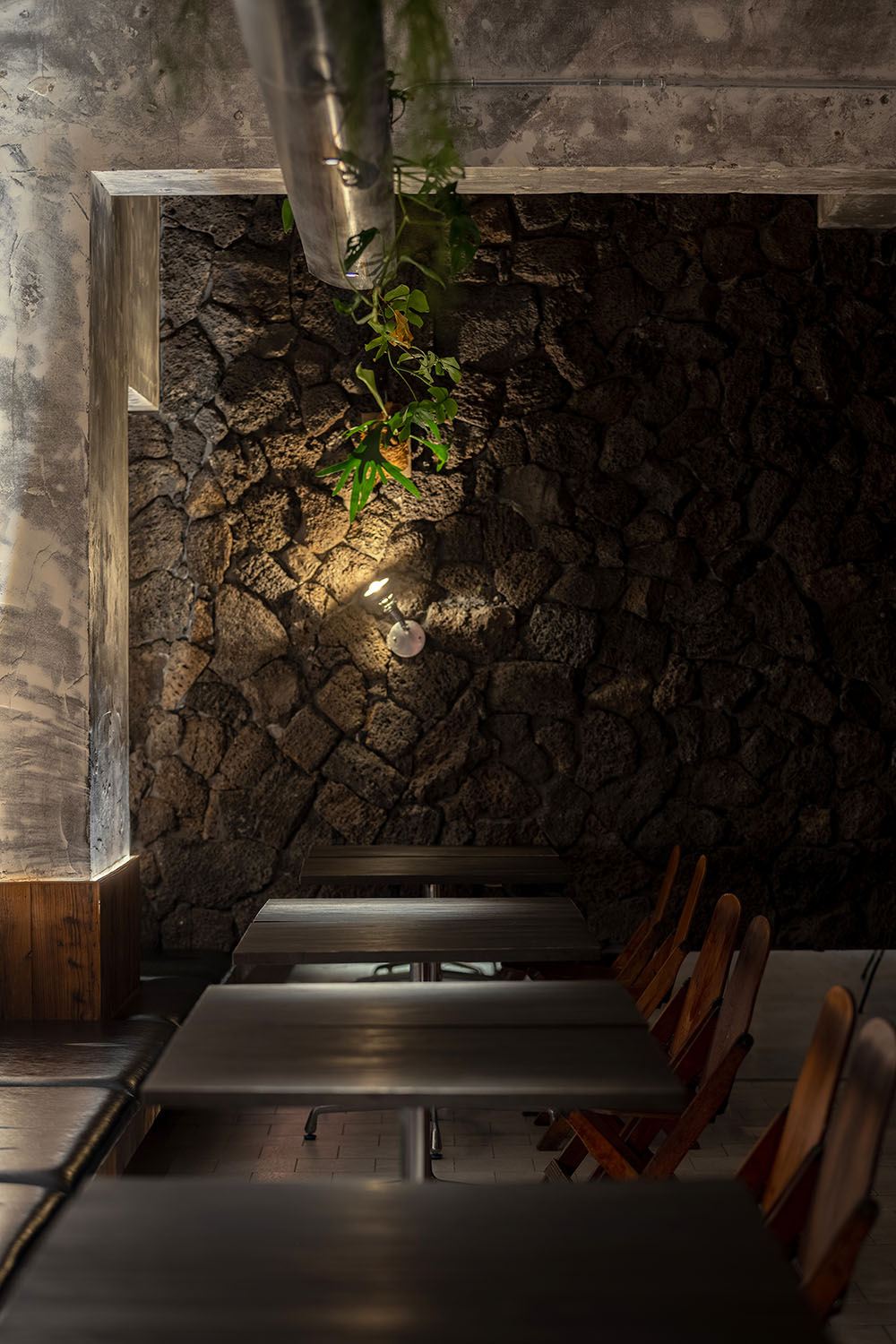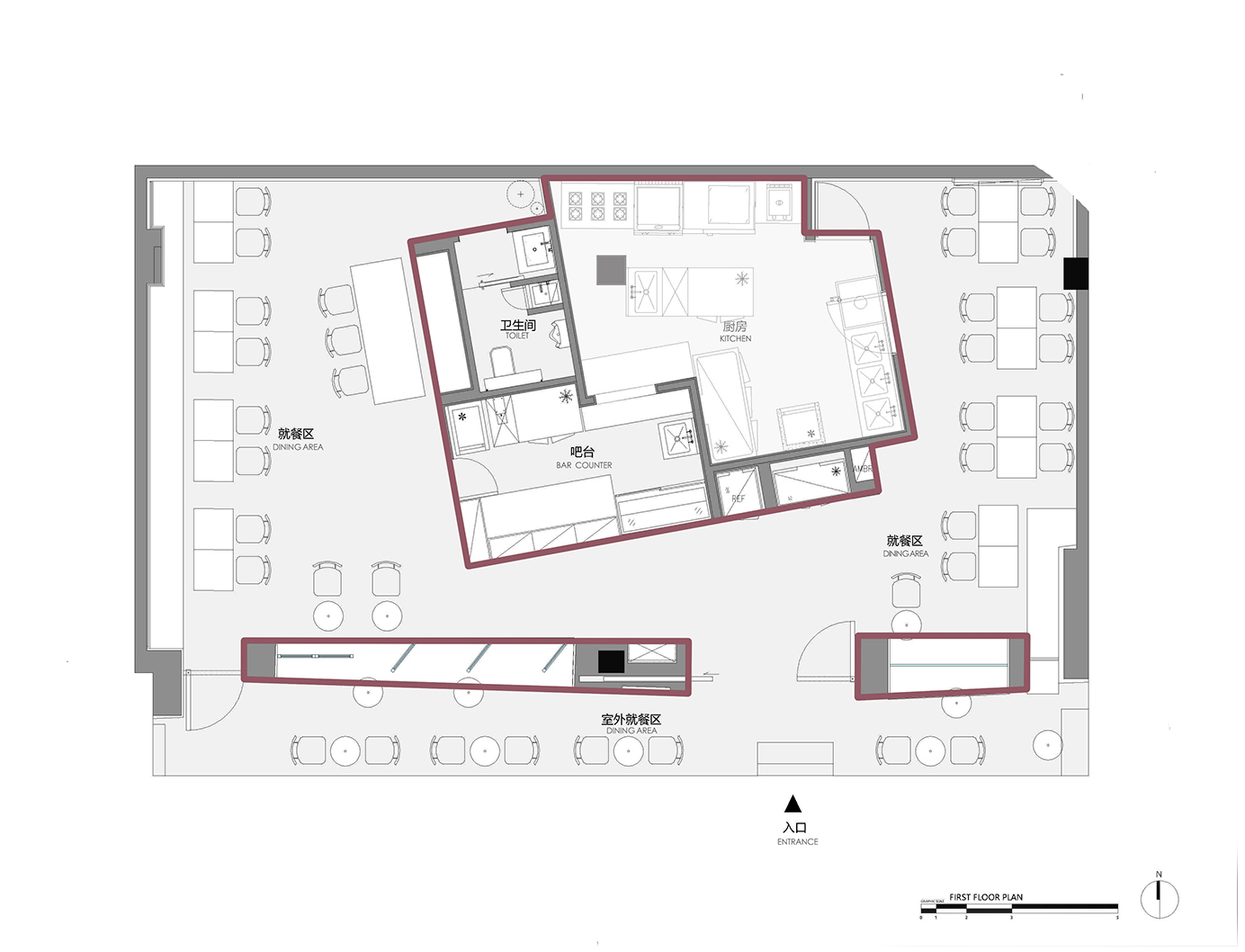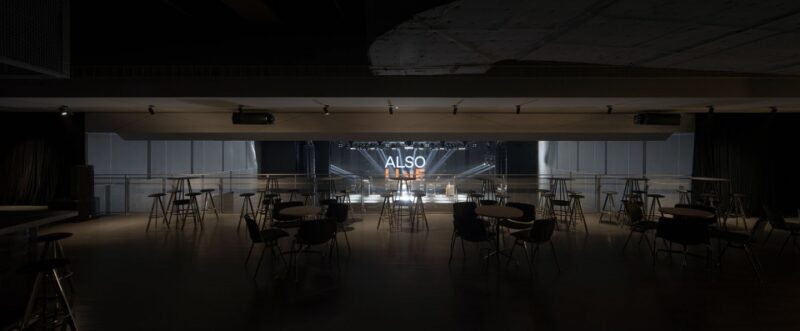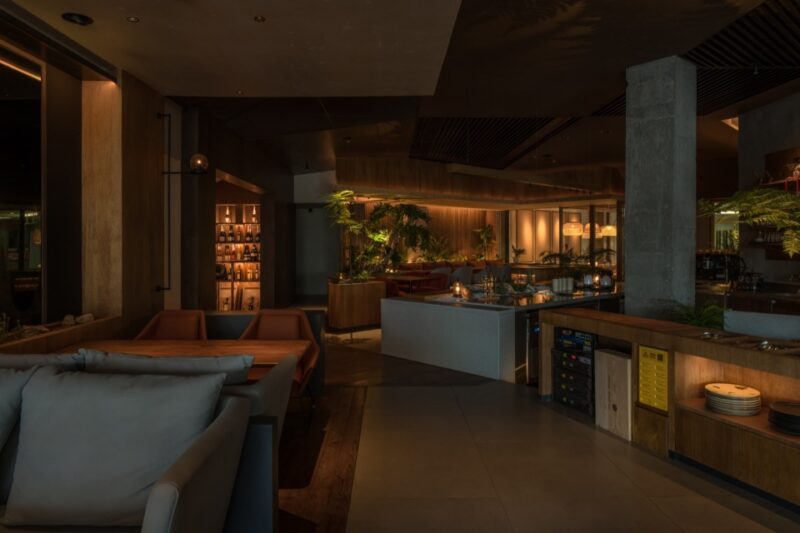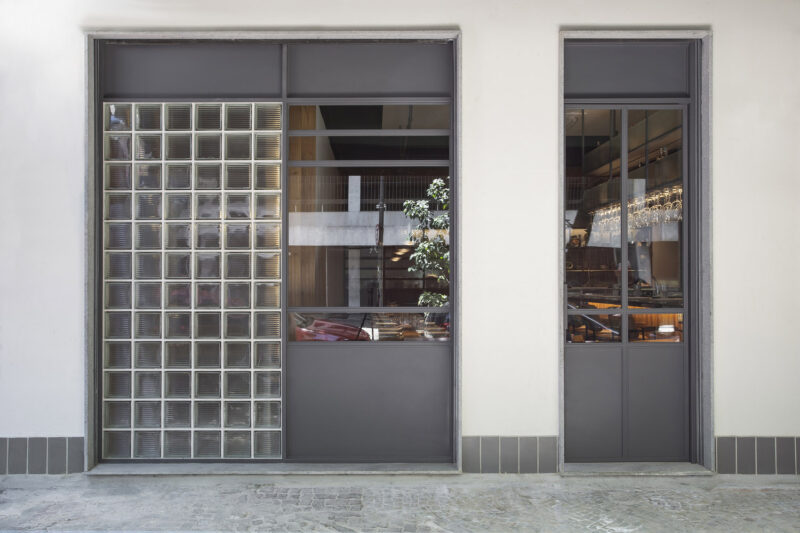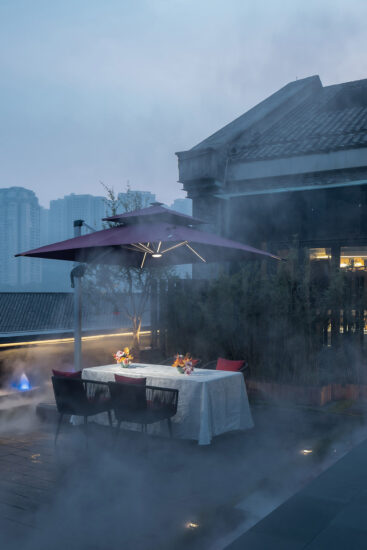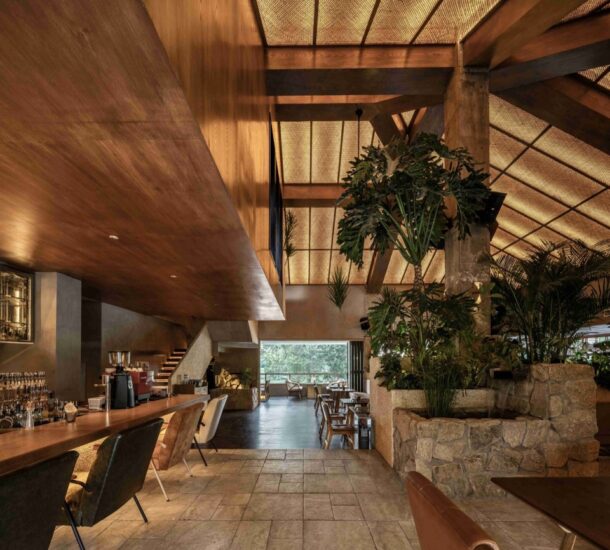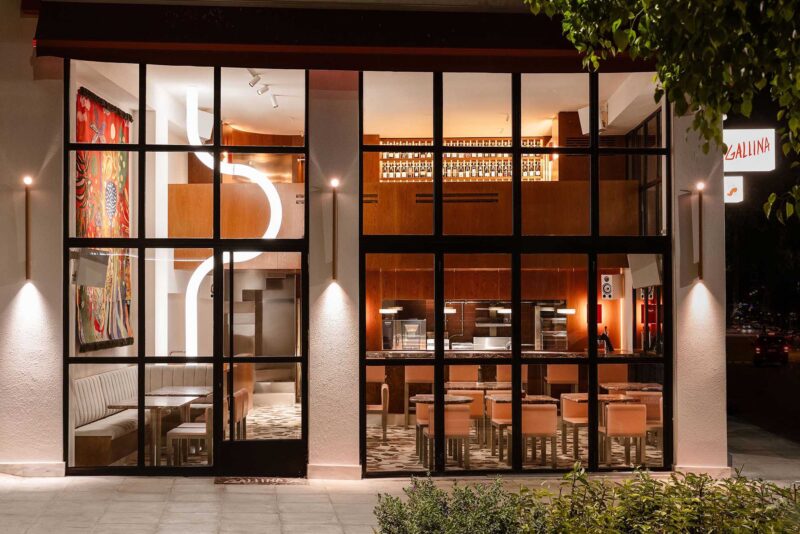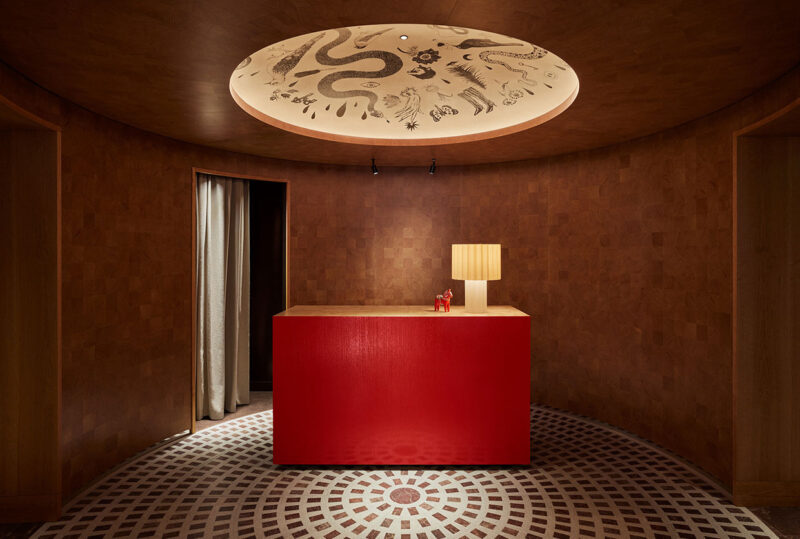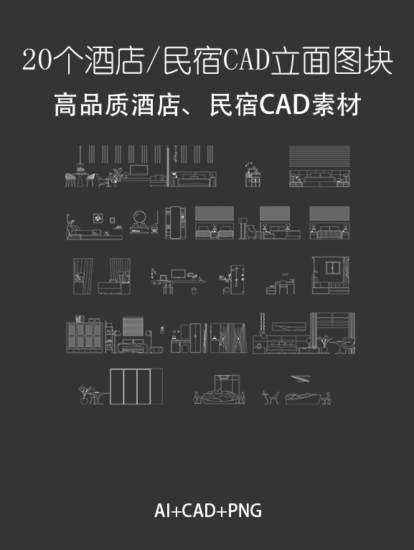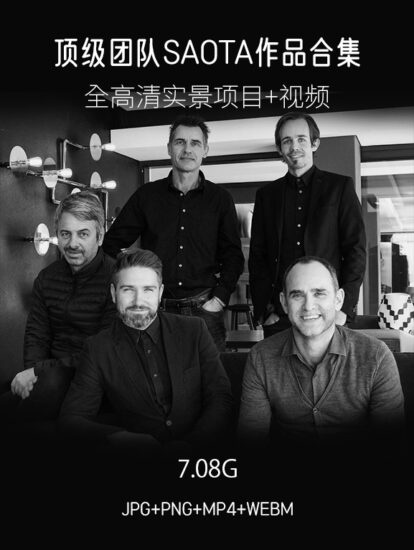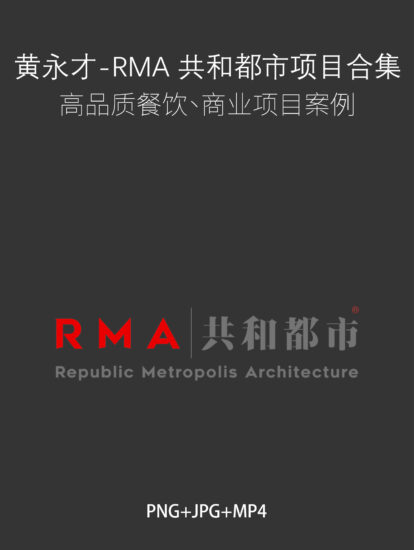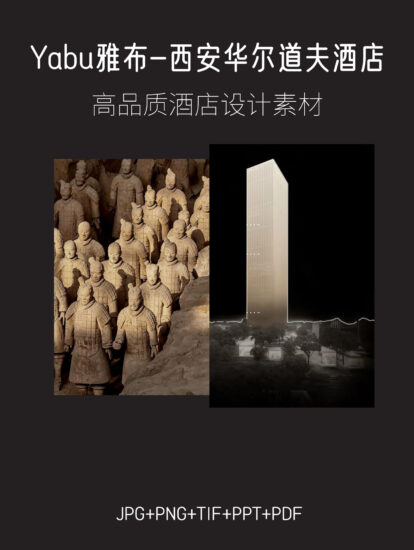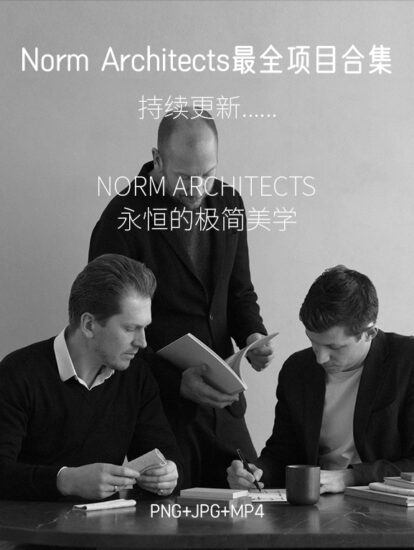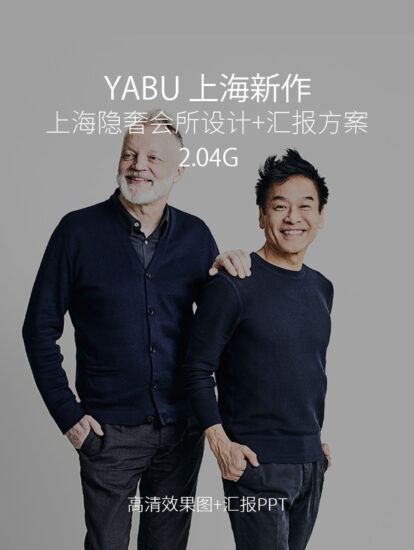“我相信有情感的建築,‘建築’的生命就是它的美。”——Luis Barraggan
“I believe in an emotional architecture. And the architecture should move by its beauty.”——Luis Barraggan
∇ 概念圖來自網絡 Conceptual image from the internet
正如巴拉甘所言“色彩、光線和簡潔的幾何都是為了表達內心的情感”。
As Barragan said, “Color, light and simple geometry are all about expressing inner emotions”.
∇ 理念圖 Conceptual image © Barragán L, Saito Y. Luis Barragán[M]. Toto Shuppan, 1992.
Cancun——重慶紫薇路上的城市更新試點之一,以“情感化的建築”為靈感,在此致敬巴拉甘的生活美學。在這個資源有限的時代,幾裏設計嚐試以此項目為錨點,以街區改造的形式,解讀建築、城市空間和人群尺度之間的交互關係,探索城市更新設計現代性的可行領域。
Cancun is a pilot project for urban renewal located on Ziwei Road in Chongqing. The design firm Vari explores modern urban renewal design using the concept of “emotionalized architecture” and drawing inspiration from Barragan’s aesthetic of life. The project aims to illustrate the interactive relationship between architecture, urban space, and human scale through block transformation.
∇ © DID STUDIO
01 INTRO
我們嚐試以光線與色彩為媒介,以幾何與建構為載體,創造有機、開放、活力、共融的城市界麵。
Our aim is to establish an organic, open, and dynamic urban interface that seamlessly integrates light and color as a medium, while relying on geometry and construction as the underlying structural support.
∇ © DID STUDIO
“絕對運動的物體呈現自身的細微軌跡,形成城市的噪點背景。”
“Objects in absolute motion present their subtle trajectories, which also forming a noisy backdrop to the urban environment.”
∇ © DID STUDIO
較之具體的邊界,虛無使物理空間的性質抽象化。人物的交往正指涉了這種「虛無」存在的可能。借此契機,CANCUN城市界麵也嚐試以辯證法式的空間留白,探討舊街區的新生路徑和城市群體的社交生活方式。
“Physical boundaries are constricting, whereas nothingness allows for the abstraction of space. The presence of social interactions among individuals implies the existence of this “nothingness”. CANCUN’s urban interface seeks to harness the power of spatial emptiness and employ dialectical approaches to revitalize old city blocks and to explore new social lifestyles for urban populations.”
∇ © 常文雨 Wenyu Chang
02 SPACE
關於空間丨懸浮的盒子
「盒子」是空間的基本形式,Cancun的改造以盒子為起點。
“Box” is the fundamental form of space, and Cancun’s renovation starts with the box as its foundation.
“當牆體成為人物與人物、人物與建築之間互動的方式。”
∇ 空間分析圖 © 幾裏設計 Spatial analysis diagram © VARI Design
四個大、中、小不同尺度、不同材質的盒子通過差異的轉軸及組合關係,構建出不同功能、不同界麵、不同感知的有機複合空間。
By employing various combinations, the four boxes come together to create an organic, compound space that features different functions, scales, and interfaces.
∇ © DID STUDIO
∇ 左© DID STUDIO 右© 常文雨 Wenyu Chang
∇ © 常文雨 Wenyu Chang
獨特的開窗形式打破硬質空間的局限,創造的交往空間有效建立起了與周邊環境和人群活動的聯係,形成活力的街頭印象。全景式敞視建築拆解了看與被看的二元對立,人的交往納入其中,一場充滿活力的“街頭精神”空間敘事拉開序幕。
By adopting open windows, the design transcends the constraints of rigid space and creates a communicative space that effectively integrates with its surroundings. The panoramic open-view structure dissolves the traditional binary opposition between seeing and being seen, facilitating human interactions and launching a dynamic narrative of the “street spirit” space.
∇ © DID STUDIO
∇ © 常文雨 Wenyu Chang
∇ © DID STUDIO
∇ © 常文雨 Wenyu Chang
03 DETAIL
01 關於色與光、質料
[Color]
通過對不同材料及光線的運用來表達色彩,如鏽鋼紅、霓虹燈紅、地板紅、混凝土紅等不同層次的紅色,將街頭bistro熱情的氛圍渲染極致。
The warm ambiance of a street bistro is brought to life with exceptional realism by utilizing various materials and lighting techniques to express color,
∇ 圖源網絡 Image from the internet
∇ © DID STUDIO
∇ © 常文雨 Wenyu Chang
[Light]
“萬物皆有裂痕,那是光進來的地方”,這是一場建築與自然的對話。
煙粉牆上婆娑搖曳的樹影就好像自然通過陽光空氣與植物在建築上留下的痕跡。
“Everything has cracks, that’s where the light comes in”, this is a dialogue between architecture and nature. The swaying shadows of the trees on the tobacco-stained wall create the impression that nature has left its marks on the building through the interplay of sunlight, air, and vegetation.
∇ © DID STUDIO
[Material]
大量的原始質感的材料來表達空間情緒,以老舊木製、裸露的混凝土、做舊的鏽鋼板為主構築了空間壁麵效果。大部分建築表皮由混凝土構成,表麵留有或木質模版、或狂野主義的清水模紋理。
We utilized a variety of raw and textured materials to convey the emotional essence of the space. The walls were constructed with aged wooden panels, exposed concrete, and weathered steel plates. The building facades mostly comprised of concrete, with surfaces that retained the textures of wood or the rugged imperfections of formwork.
∇ 材質圖,圖源網絡 Texture image from the internet
∇ © 常文雨 Wenyu Chan
∇ © DID STUDIO
[Green]
旱地仙人掌與濕潤雨林,充滿幾何感的室外空間與有機感的室內環境巧妙碰撞。頂部的木板麵和撐杆的設計借鑒傳統撐杆窗,圍坐於下,仿佛回到舊時外婆家的盛夏。
The dry land cacti and humid rainforest, along with the geometric outdoor space and organic indoor environment, ingeniously collide. Sitting in this space feels like returning to the midsummer of one’s grandmother’s old home.
∇ © DID STUDIO
∇ © 常文雨 Wenyu Chang
∇ © DID STUDIO
正如John Portman在《Common Edge》所述,打造人性化的場所,修複日漸衰退的城市肌理,是當今城市複興的最佳模式。以CANCUN為中心,幾裏將繼續探索建築、城市空間和人性化的互動關係,營造場景,重塑現代城市的肌理和社交氛圍。
Just as John Portman’s declaration on urban regeneration in “Common Edge”: creating a place for people and repairing the declining urban texture is the best paradigm for urban regeneration in the era of stock. Vari will explore architecture and human interaction to revive modern cities.
∇ 平麵圖 © 幾裏設計 Plan © VARI Design
項目信息
項目名稱:Cancun Bistro
項目地點:重慶市江北區紫薇路
項目類型:城市更新
項目麵積:160㎡
完工時間:2022年4月
主創設計:齊帆
設計團隊:蔣逸男、趙靜、何琪、馮攀遨
設計公司:幾裏設計
設計範圍:建築、室內
文案:蔣逸男、肖巧、姚小密
項目攝影:DID STUDIO、常文雨
Project name: Cancun Bistro
Location: Ziwei Road, Jiangbei District, Chongqing ,China
Project type: City Renovation
Area: 160㎡
Completion time: April, 2022
Principal designer: Fan Qi
Design team: Yinan Jiang, Jing Zhao, Qi He, Panao Feng
Design firm: Chongqing Vari Architectural Design Co., Ltd
Design scope: Architecture, interior
Article: J.C, X.Q, Y.M
Photography: DID STUDIO, Wenyu Chang


